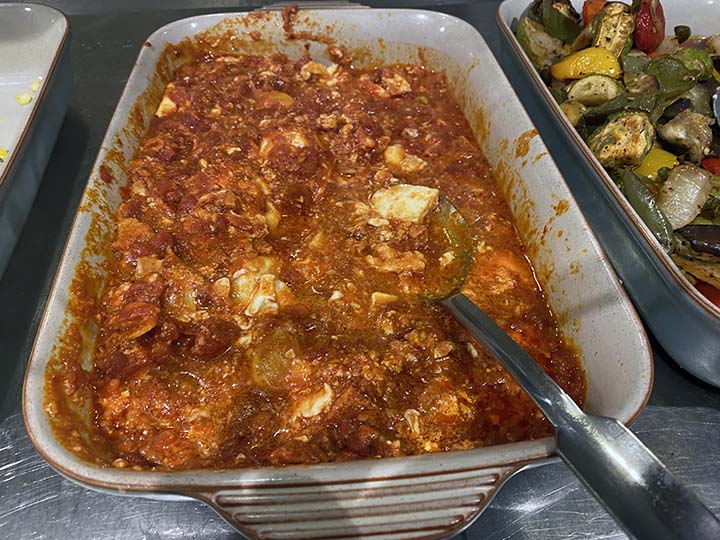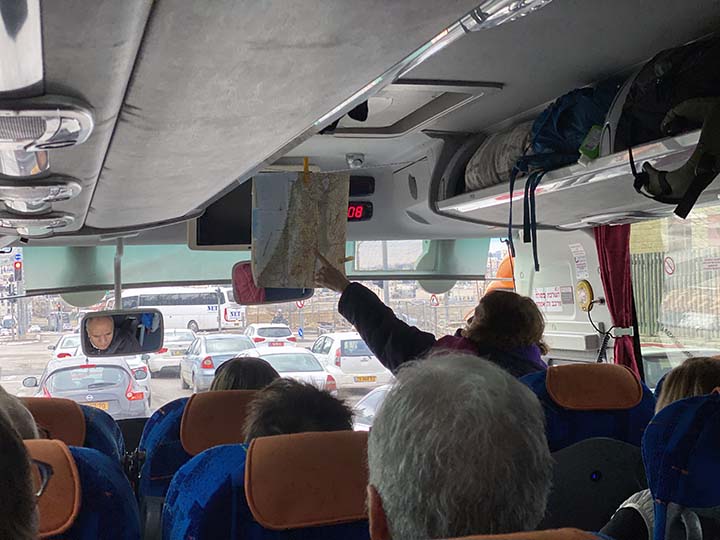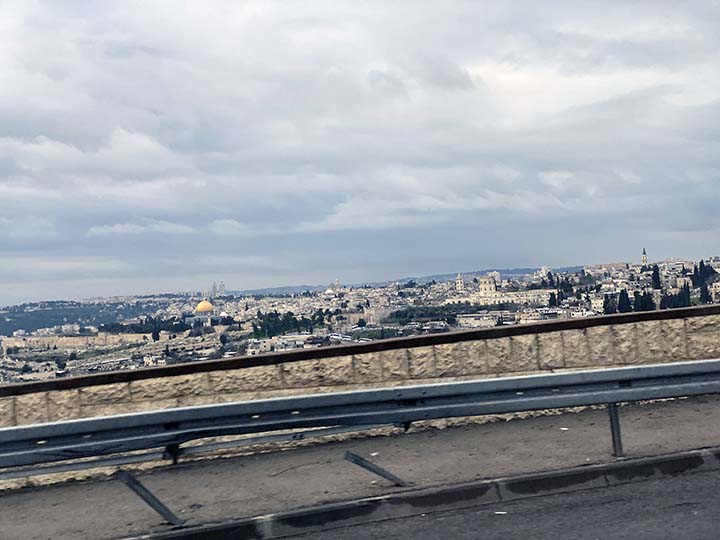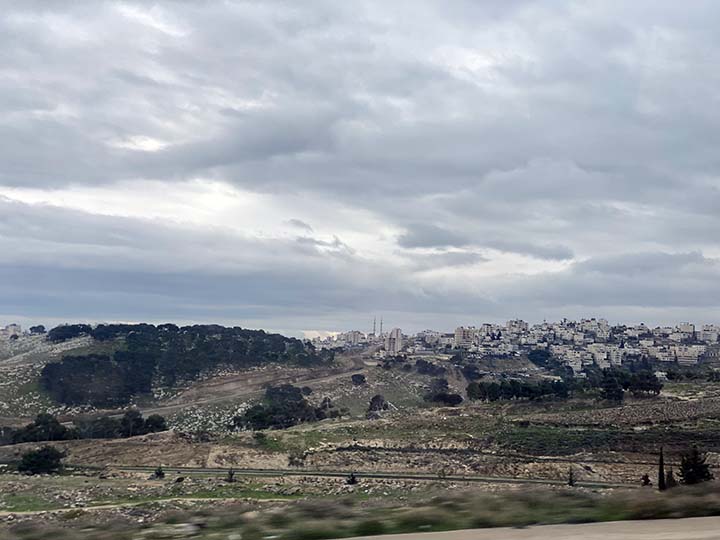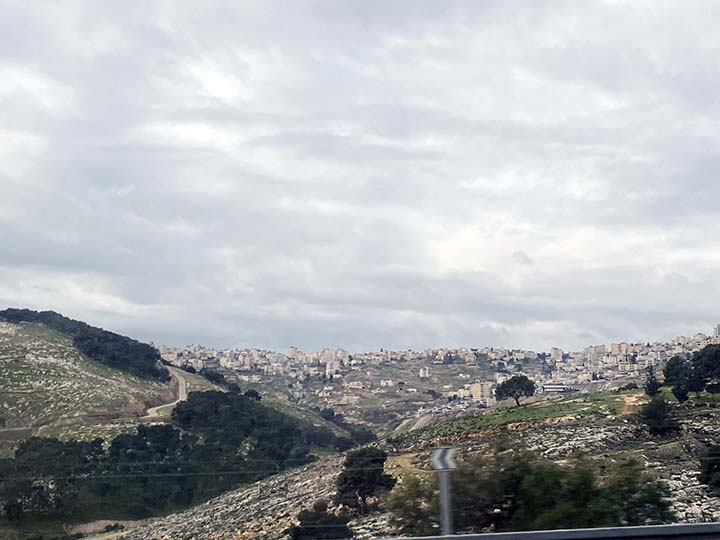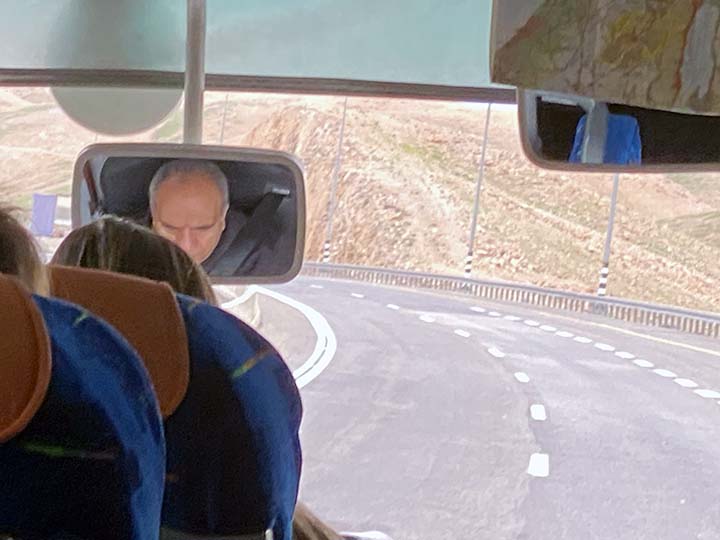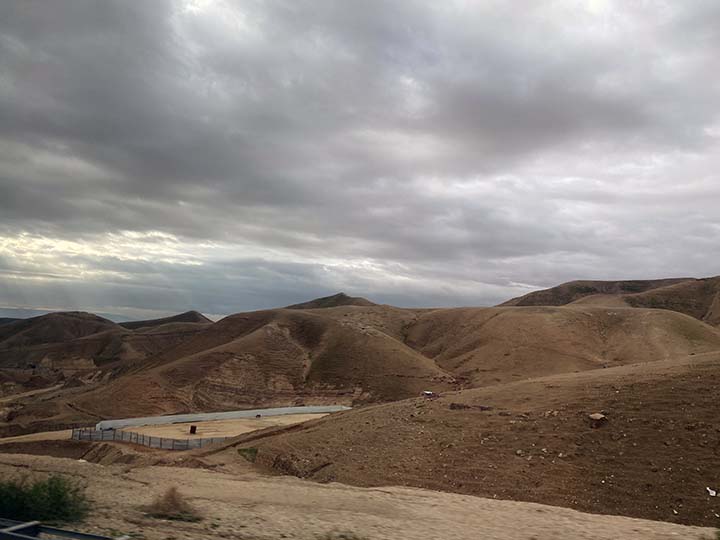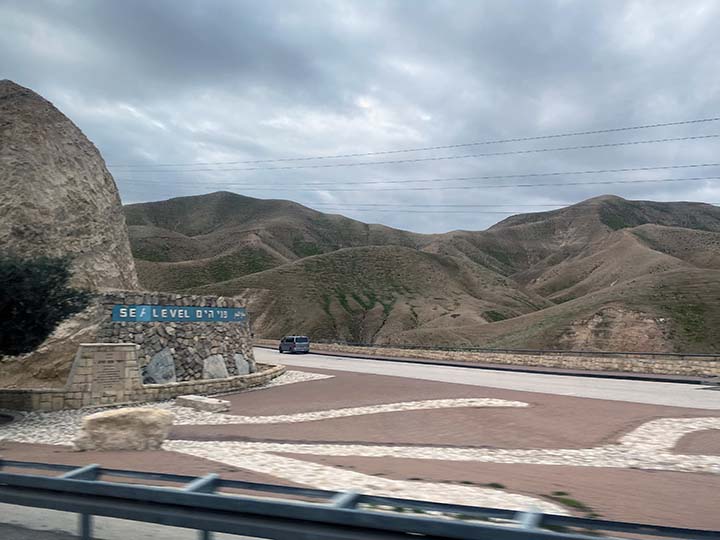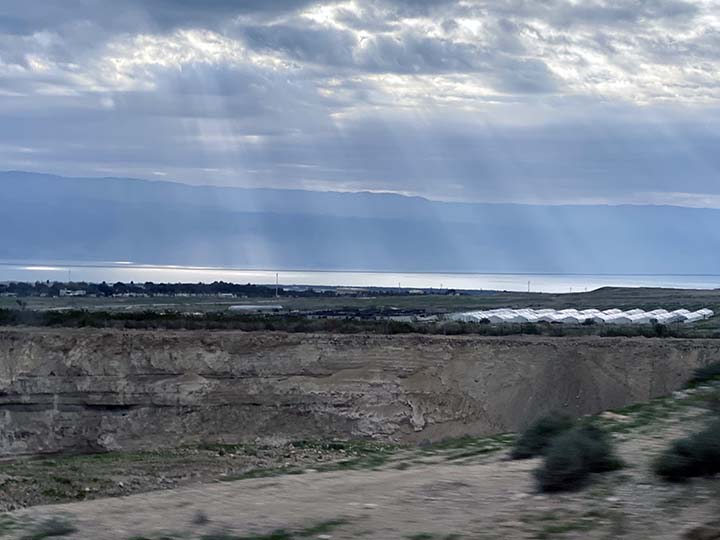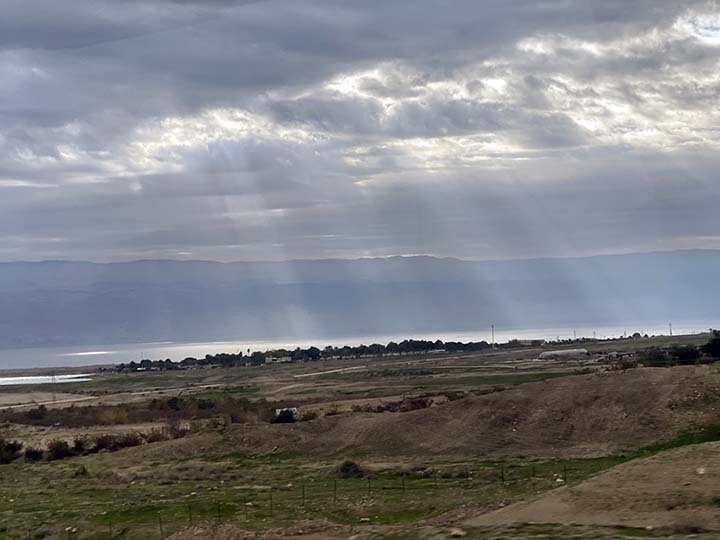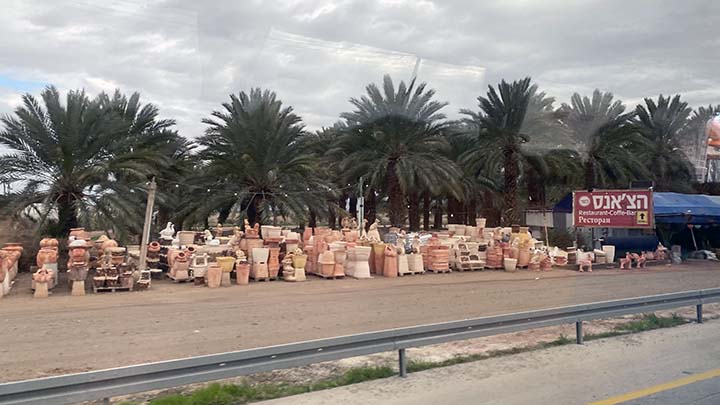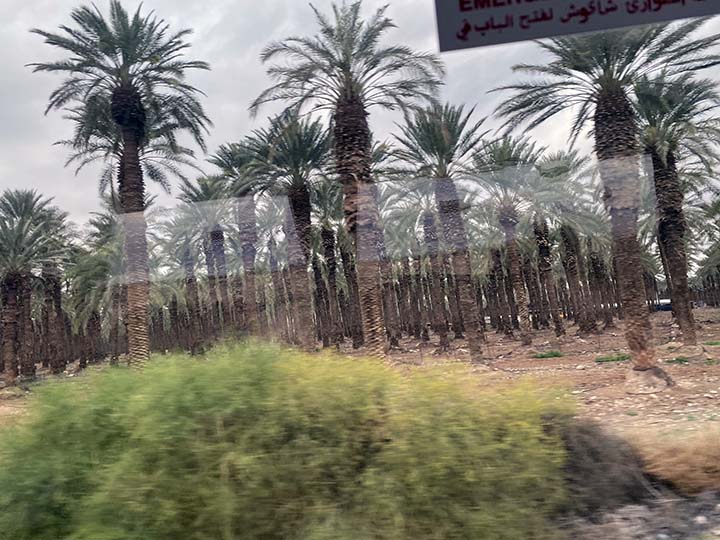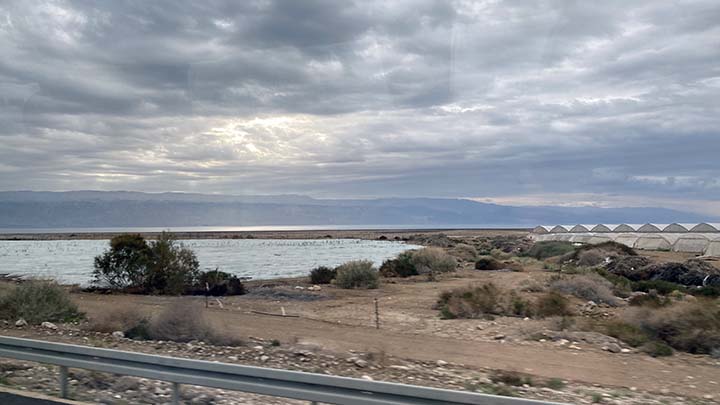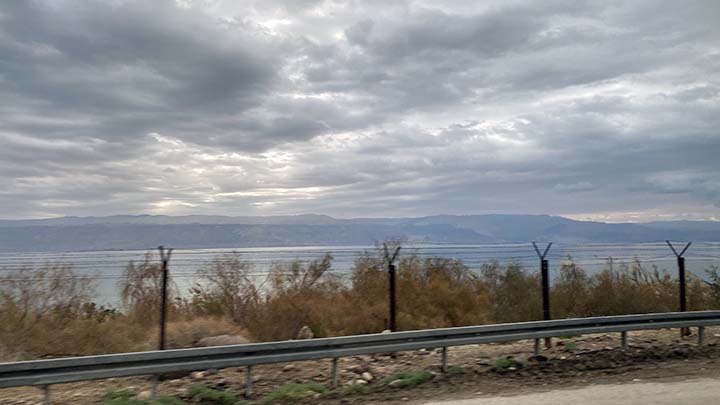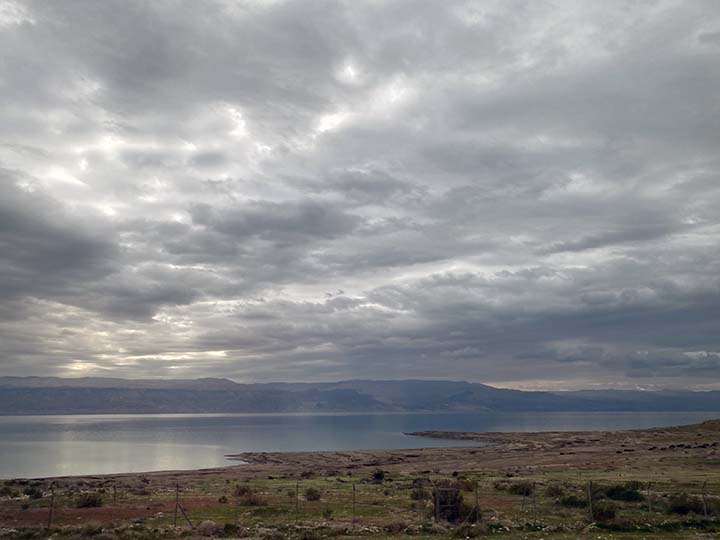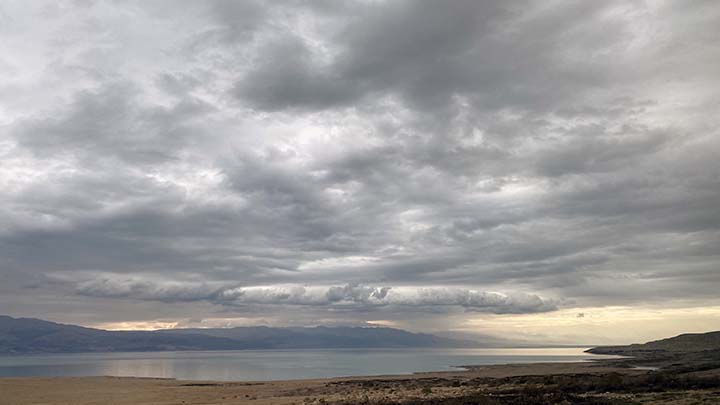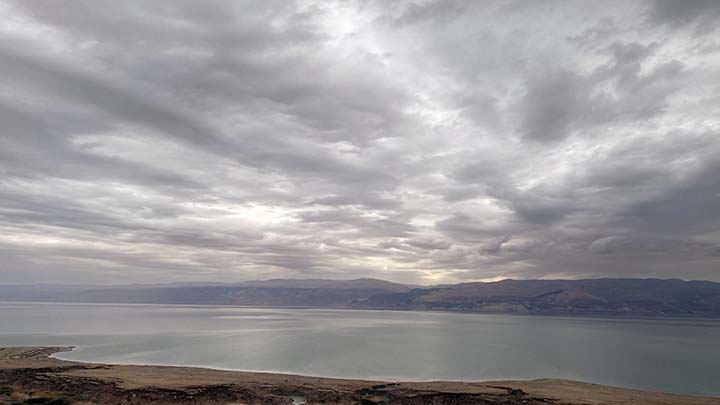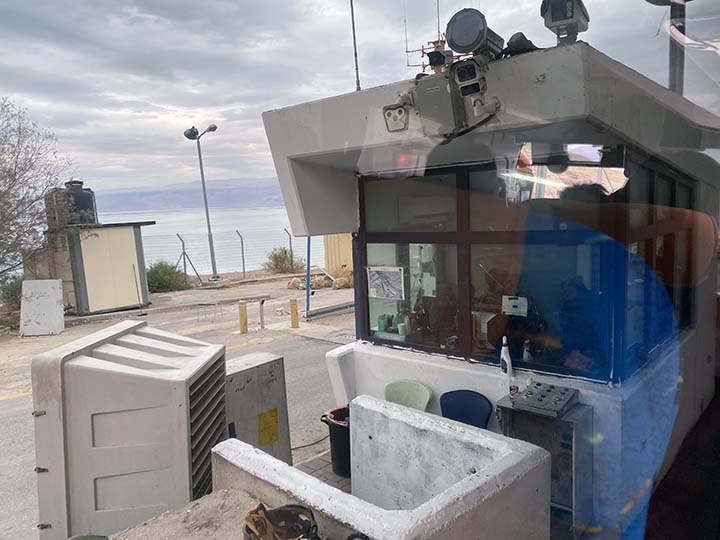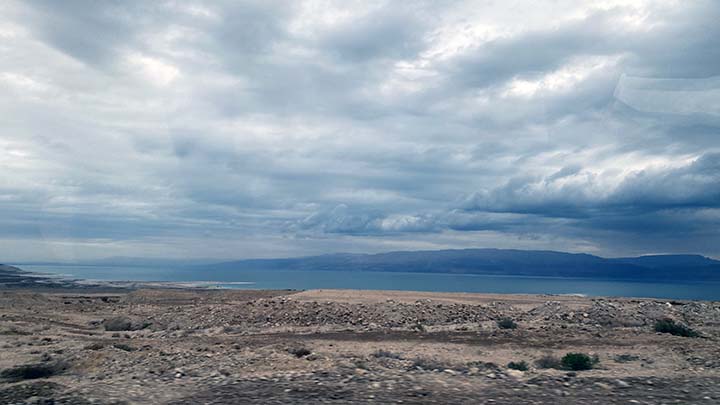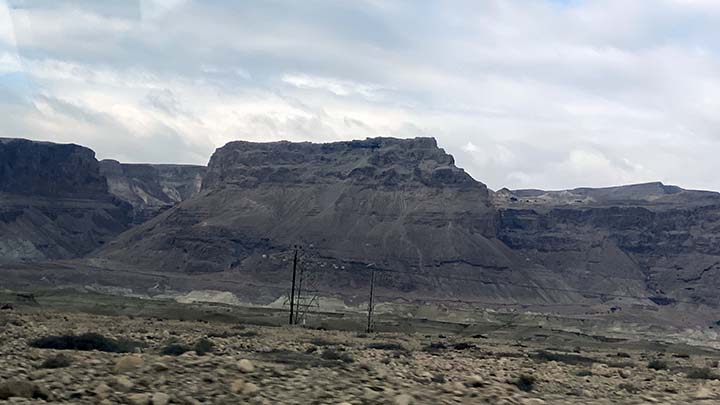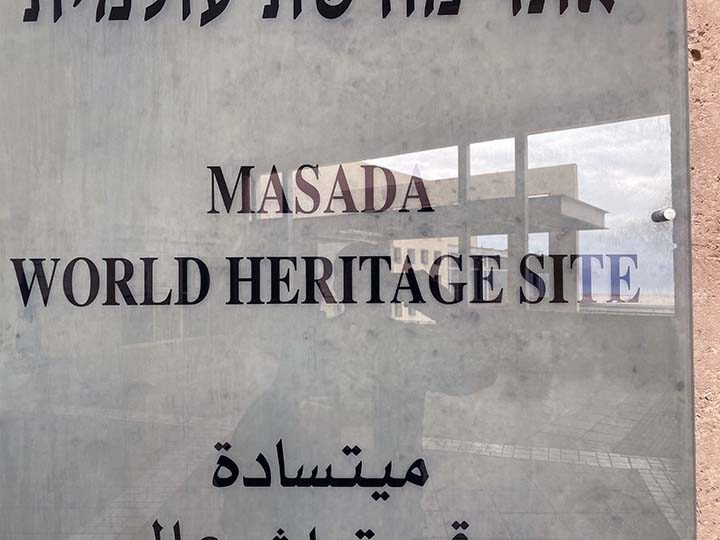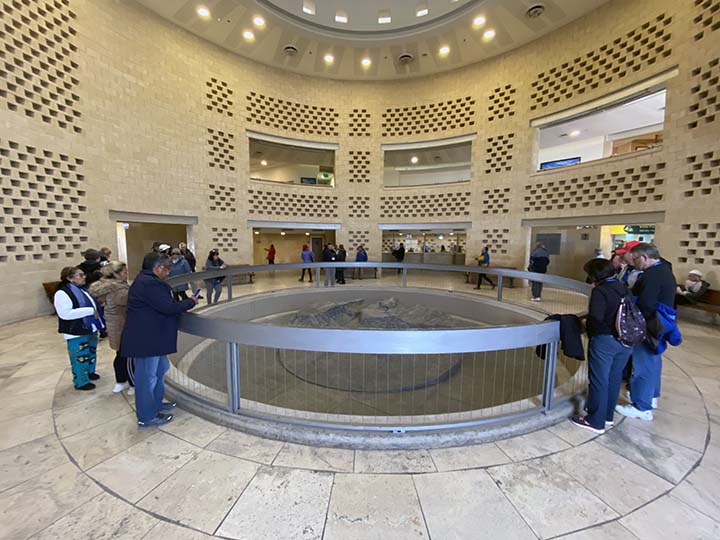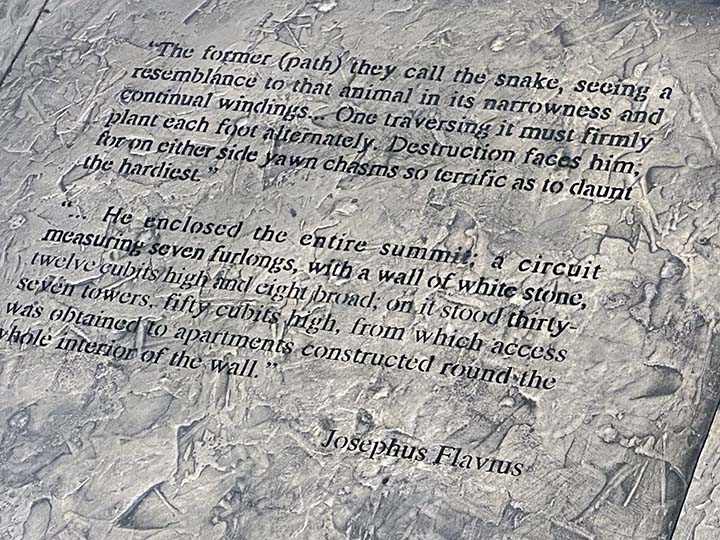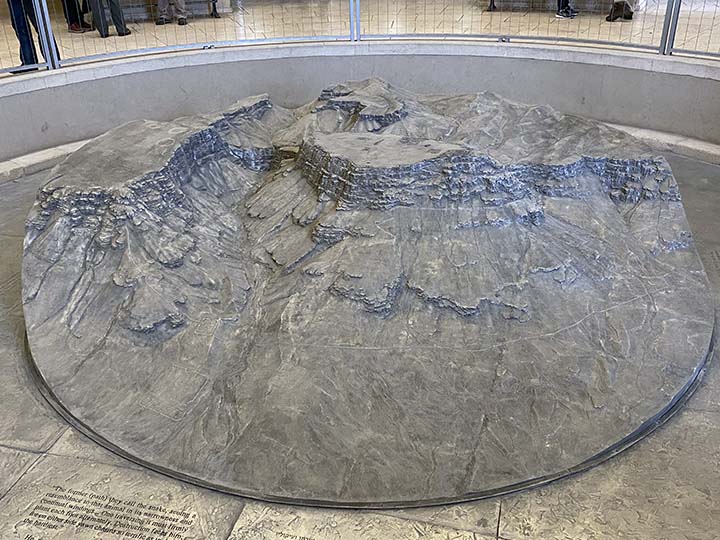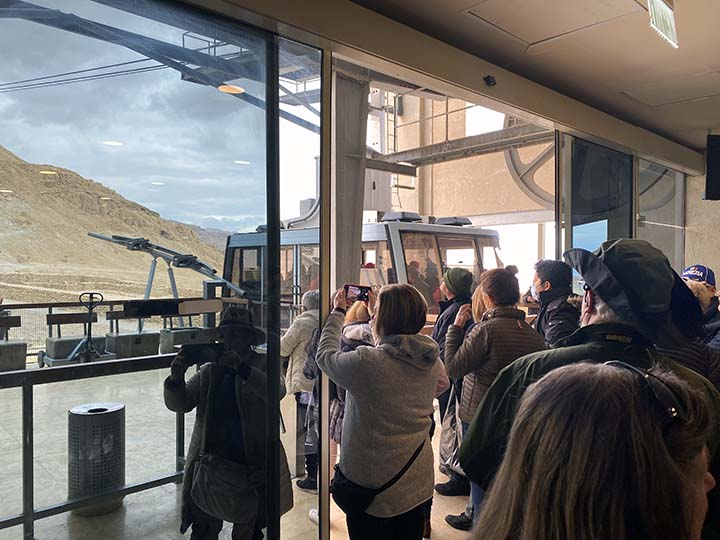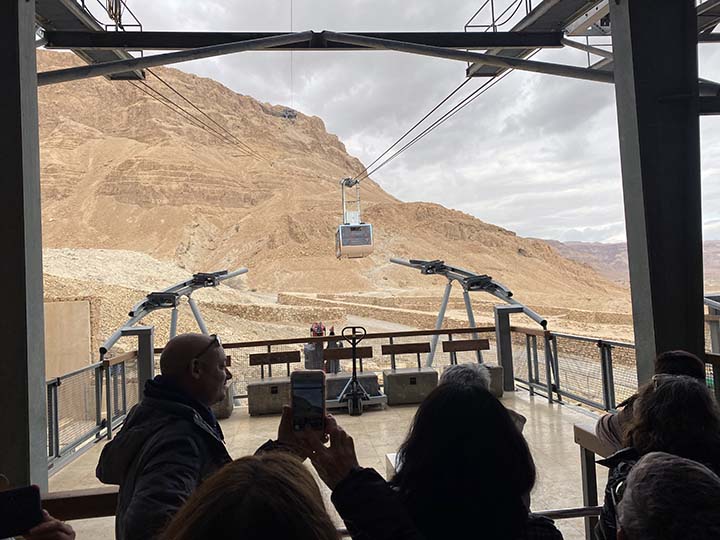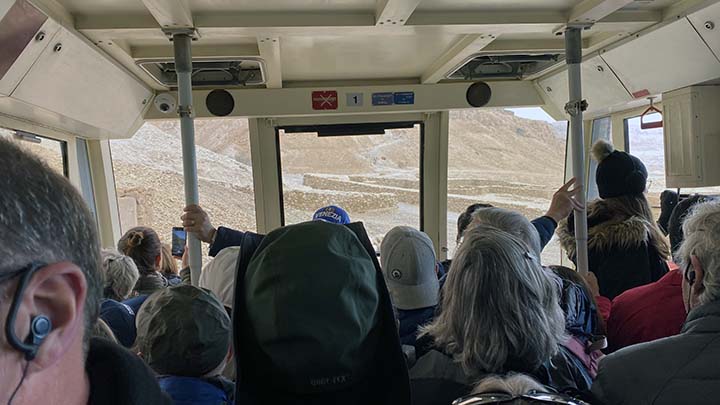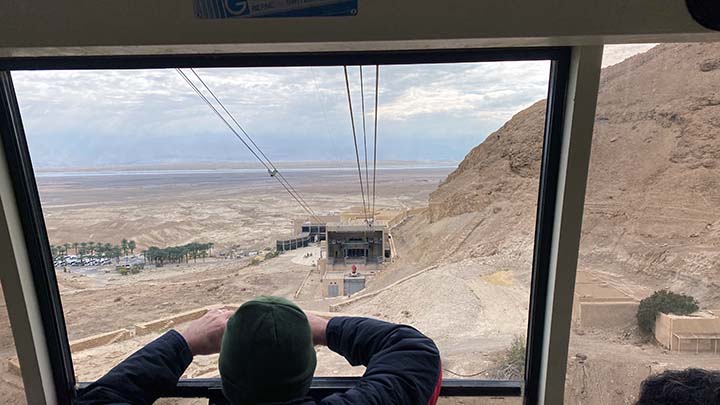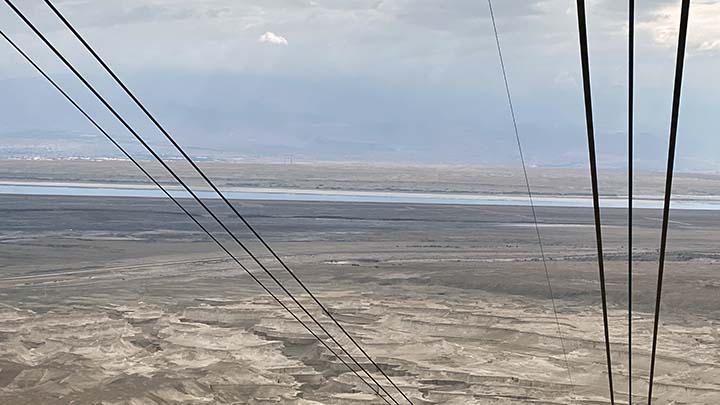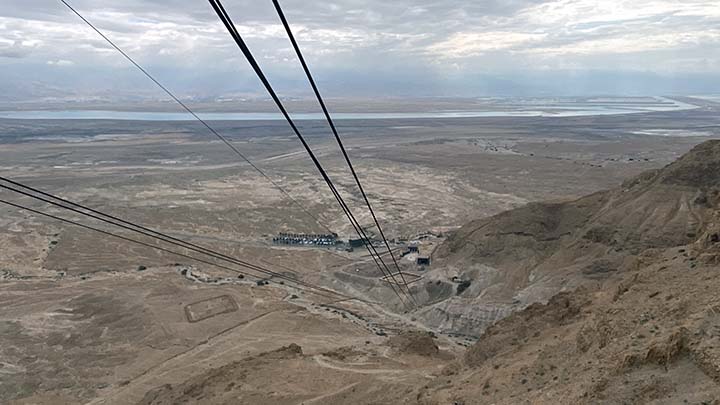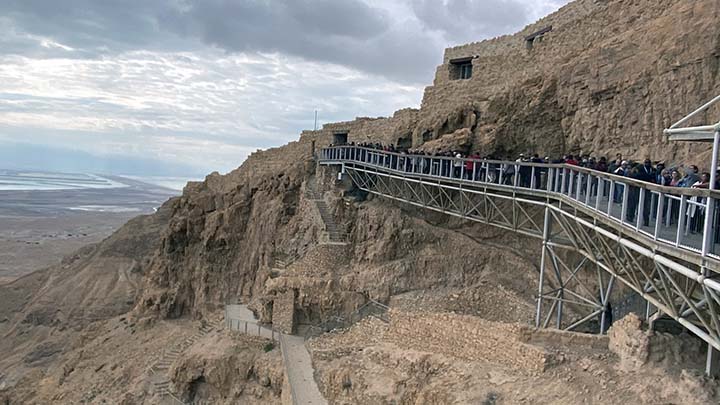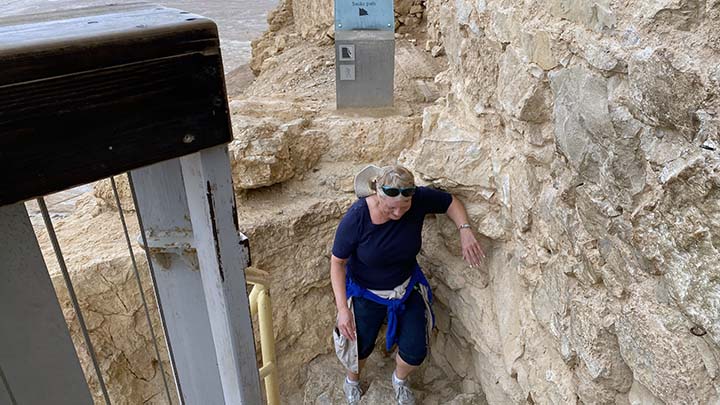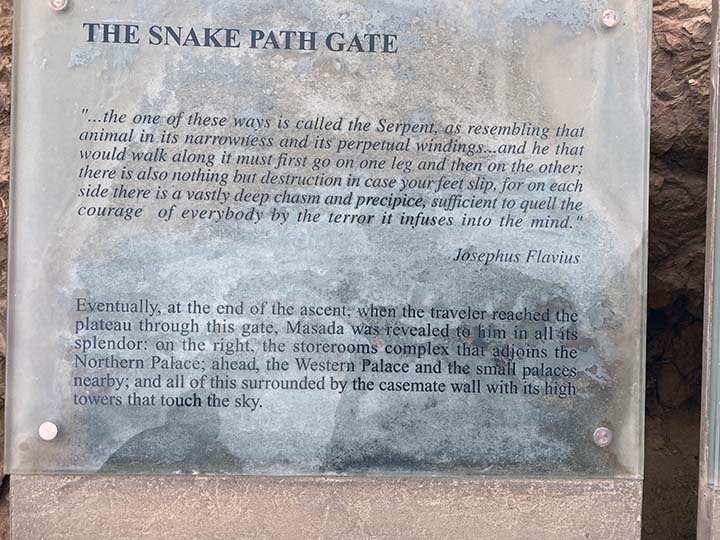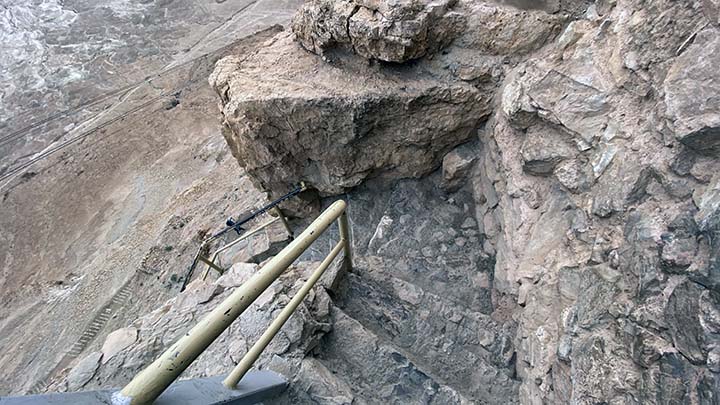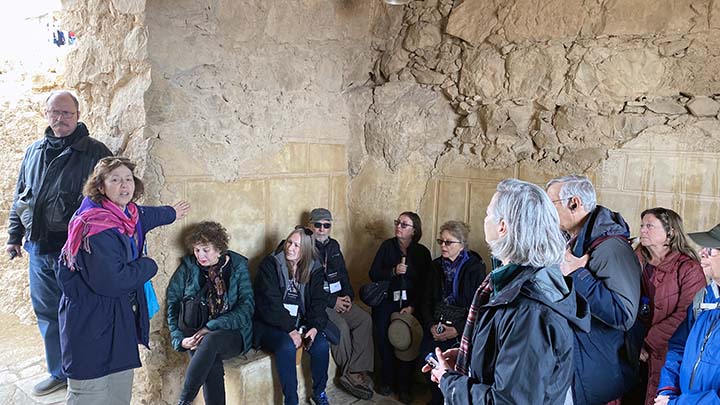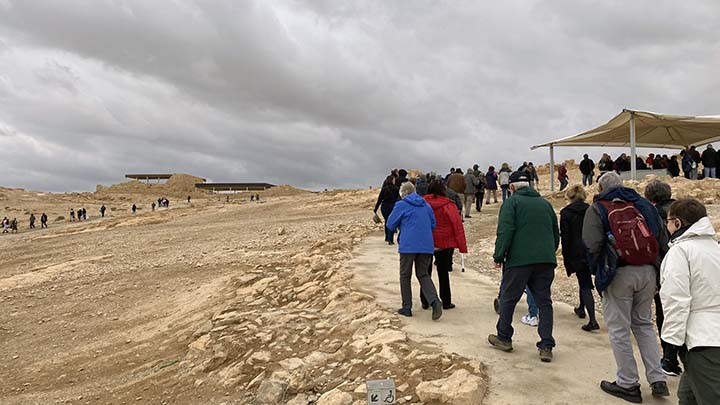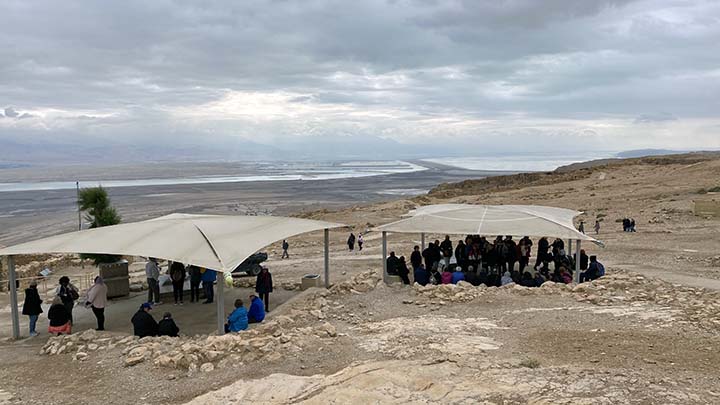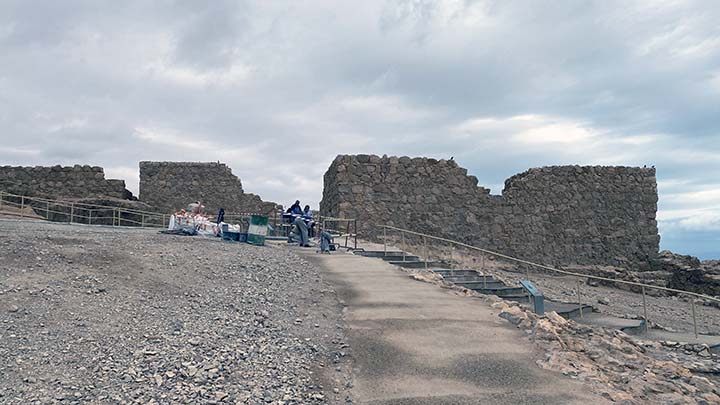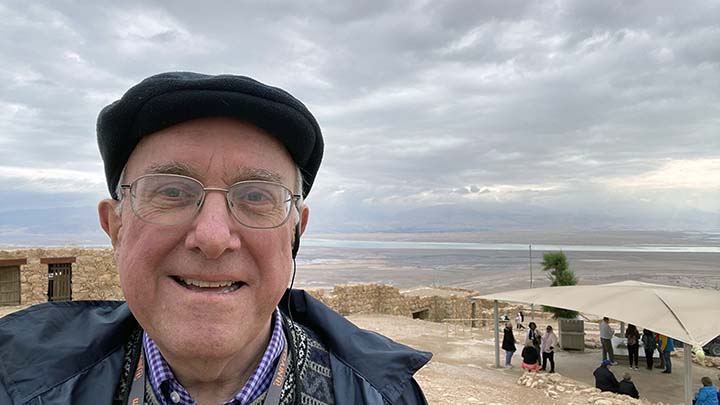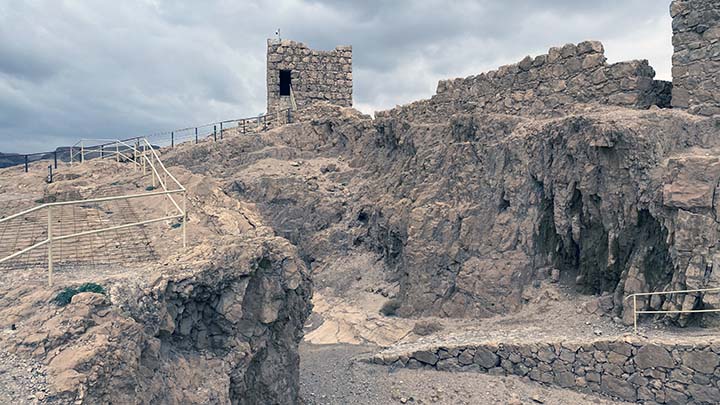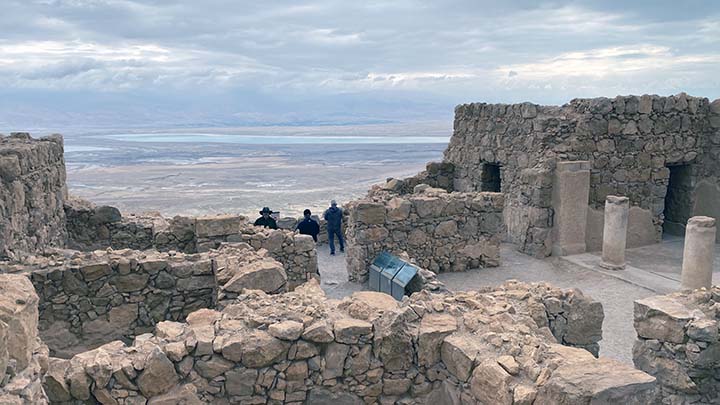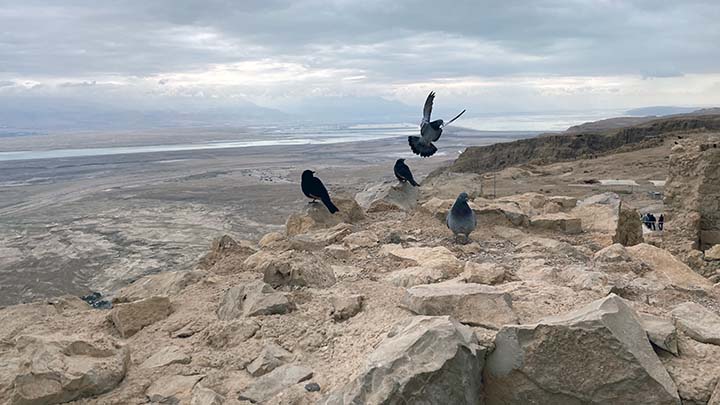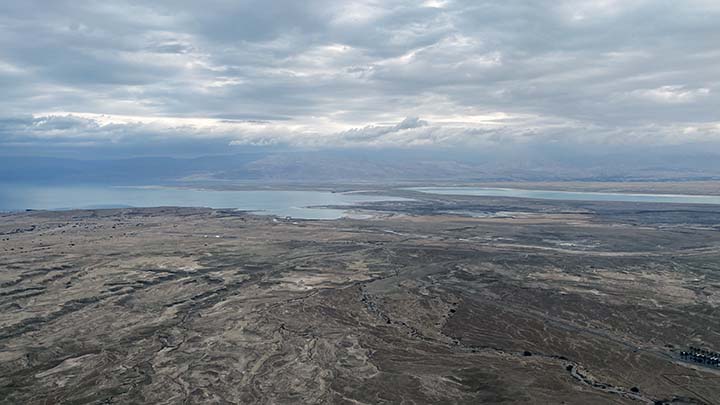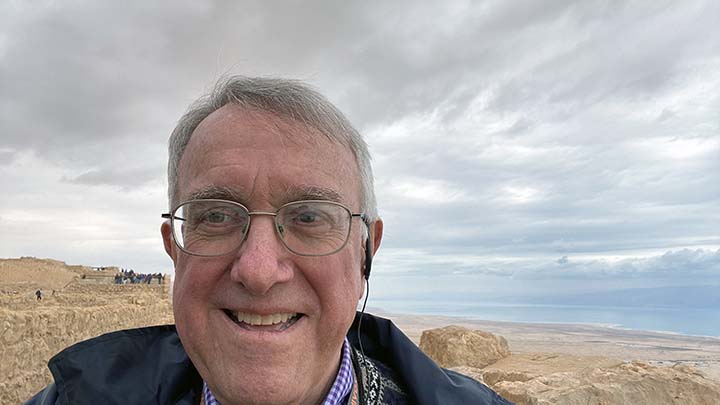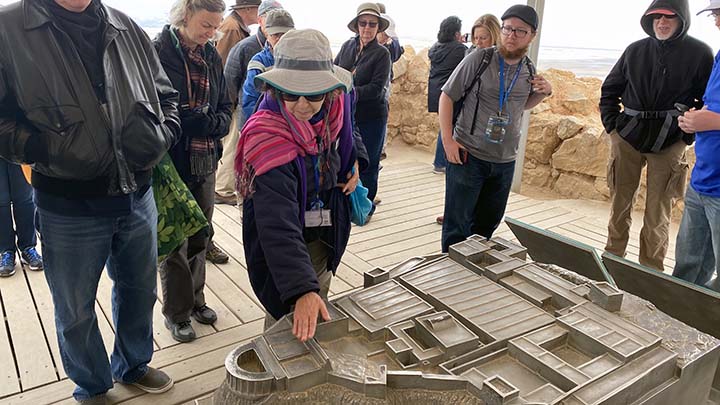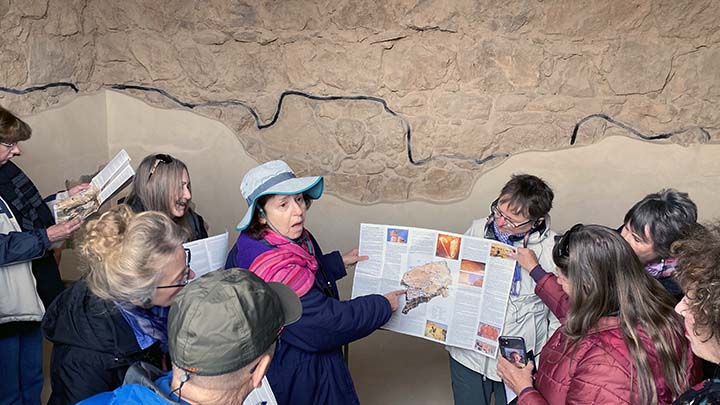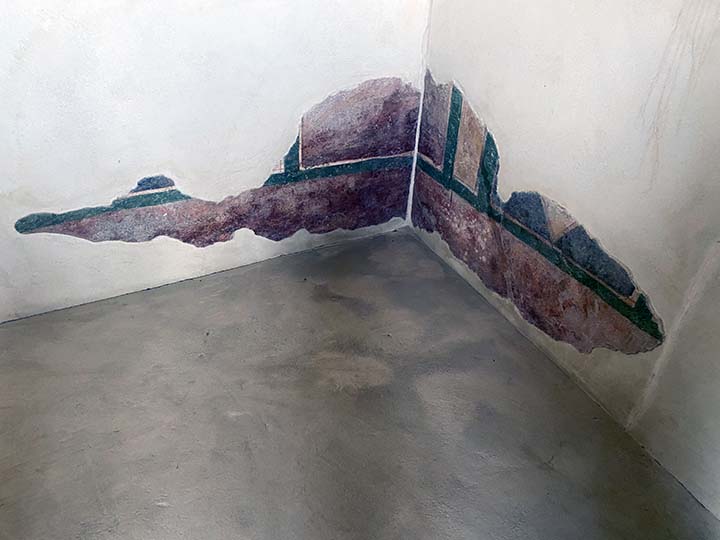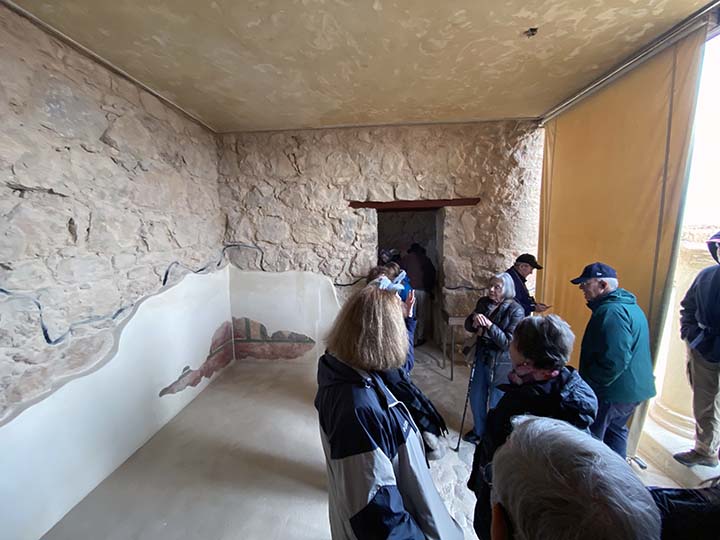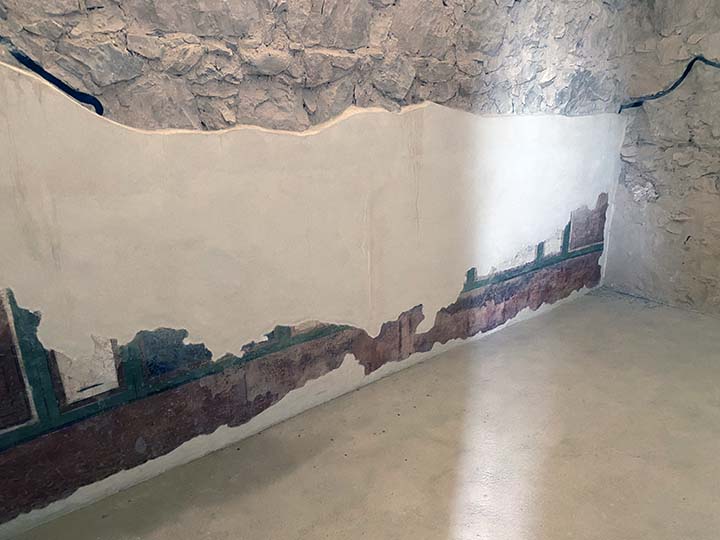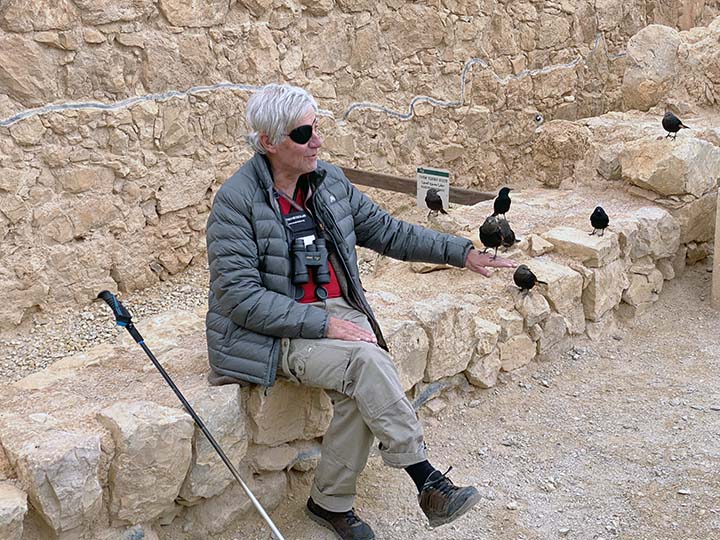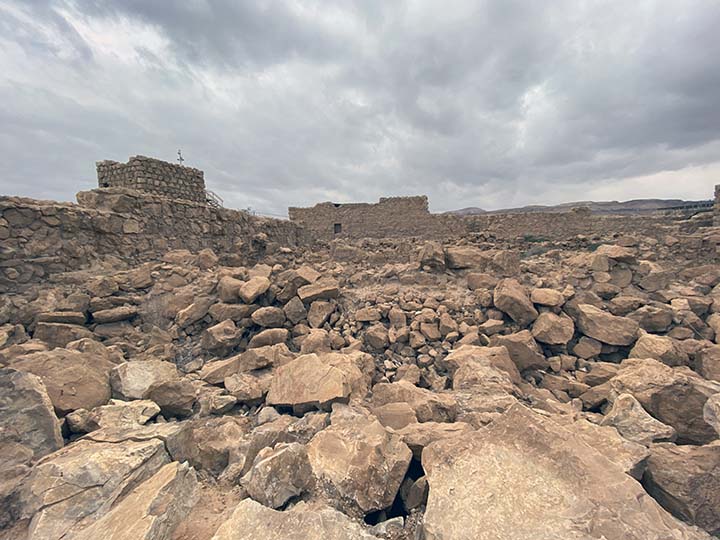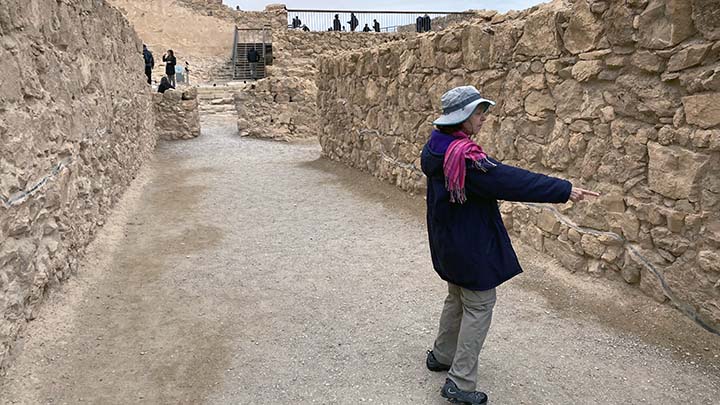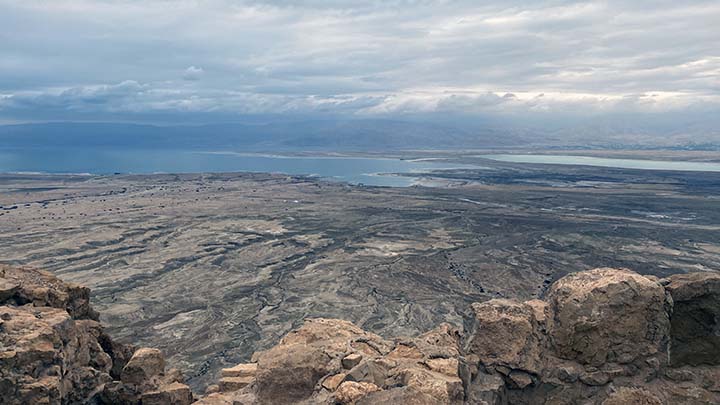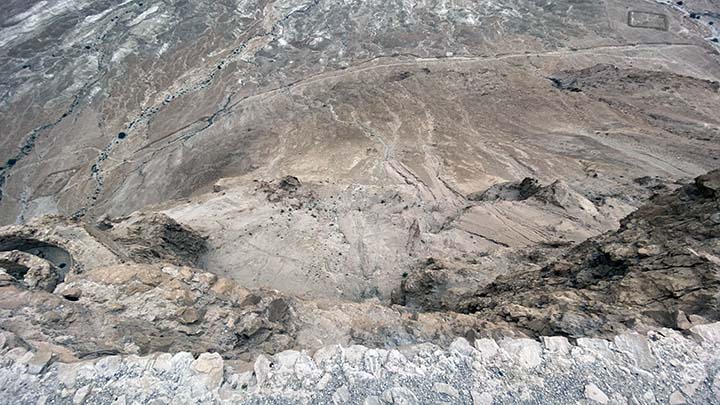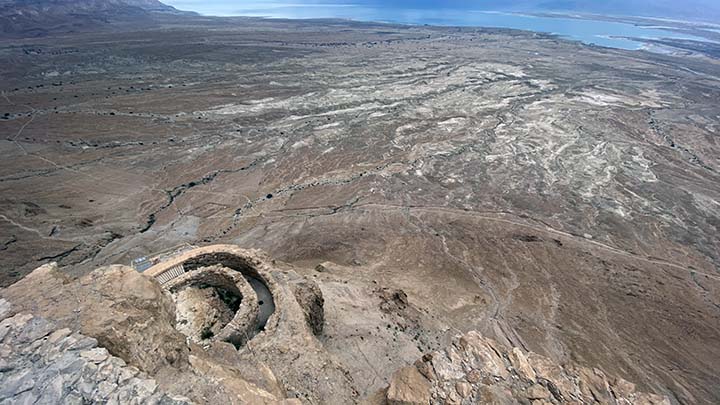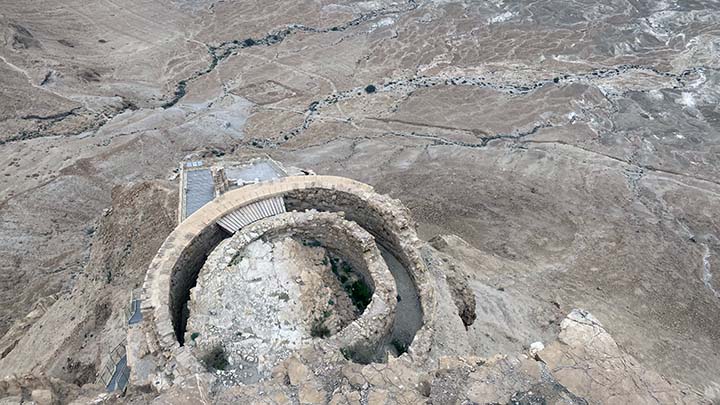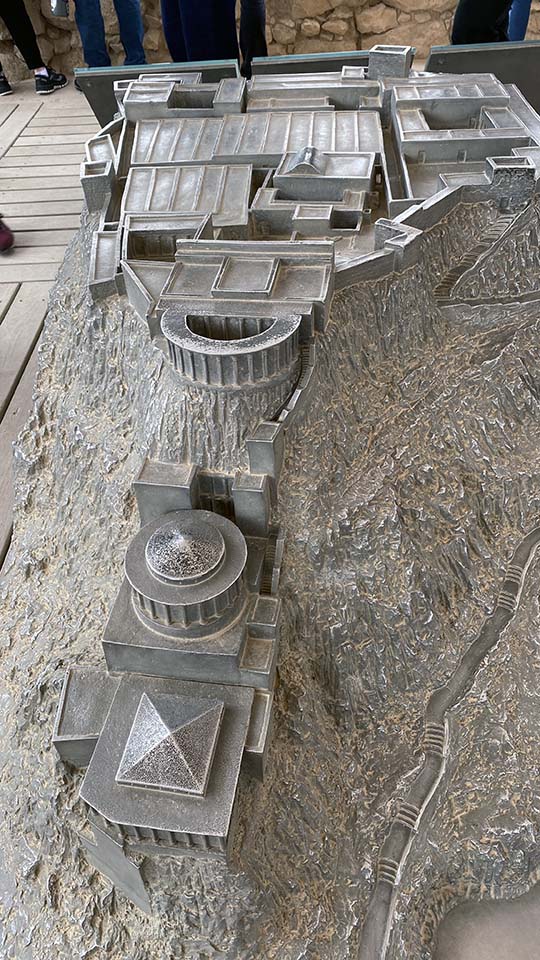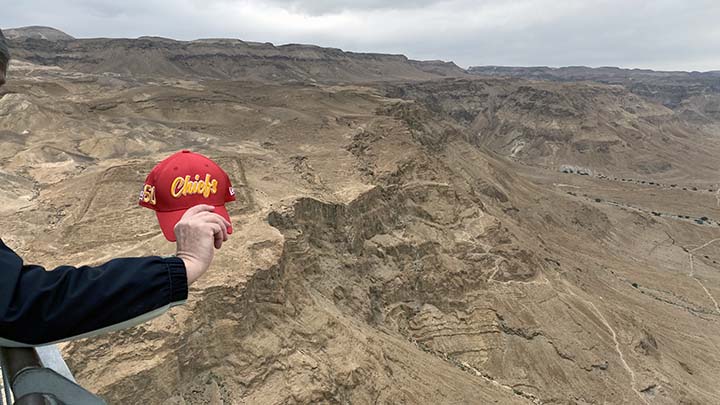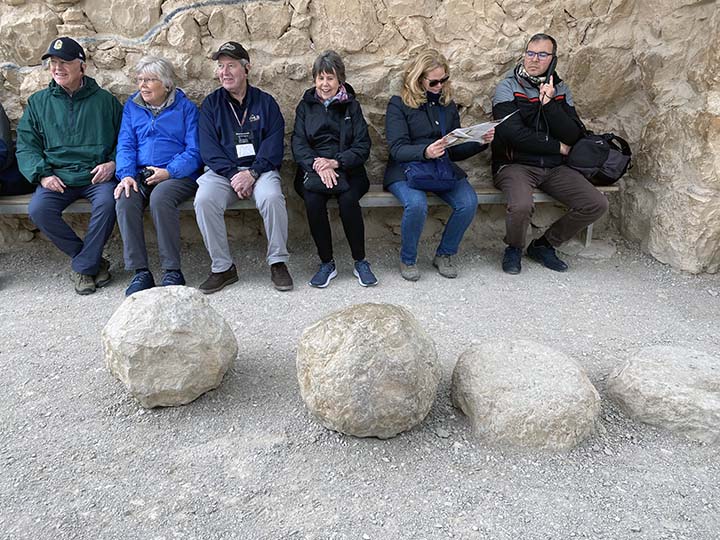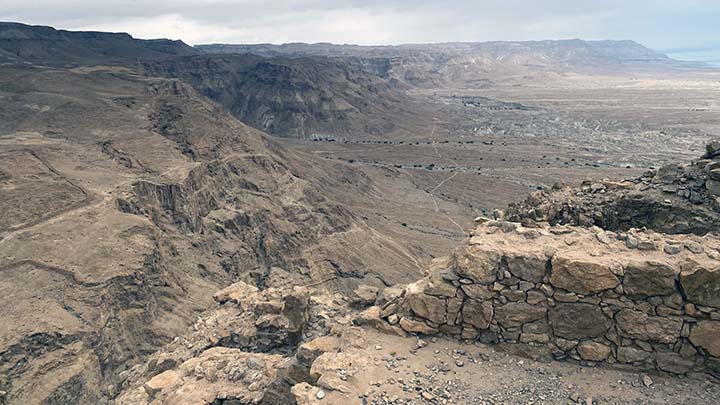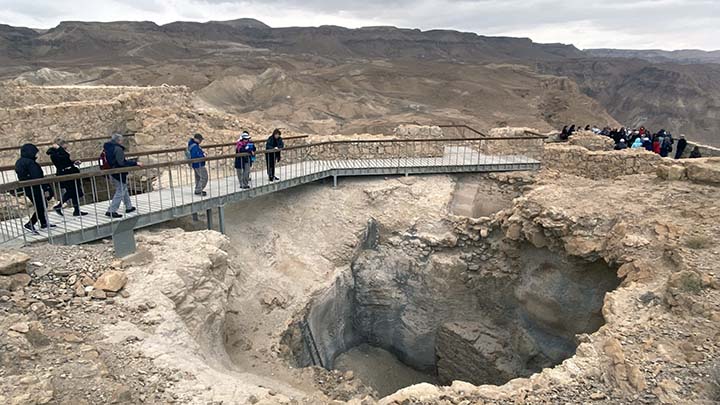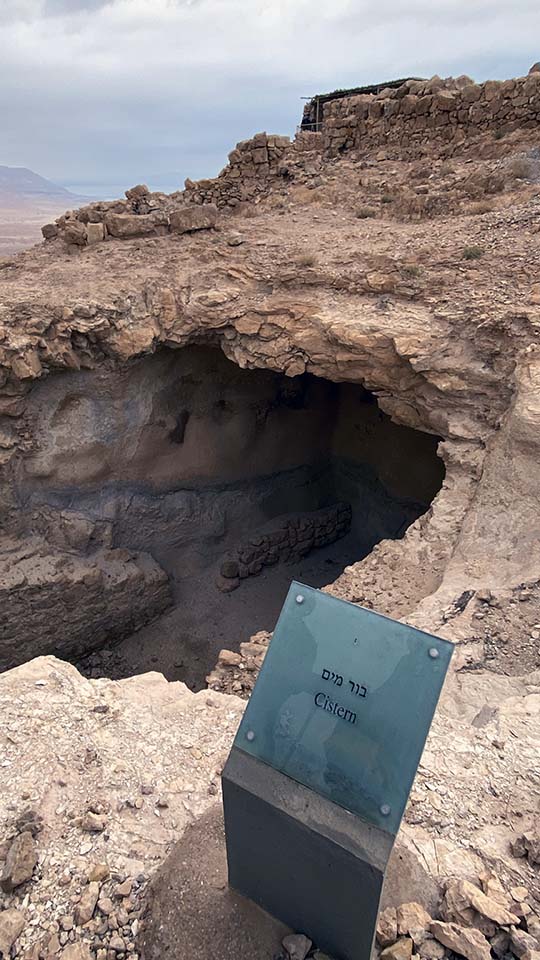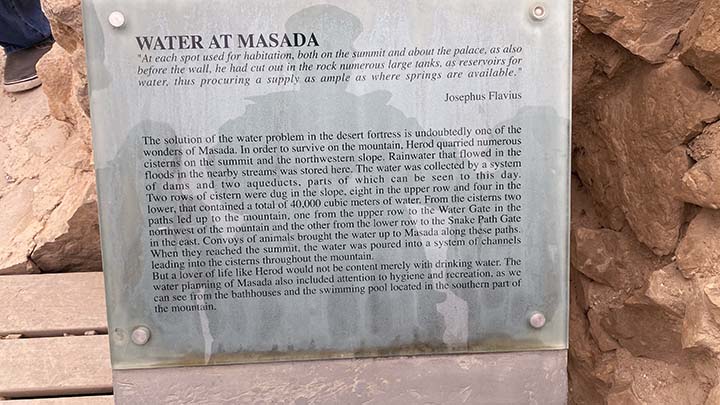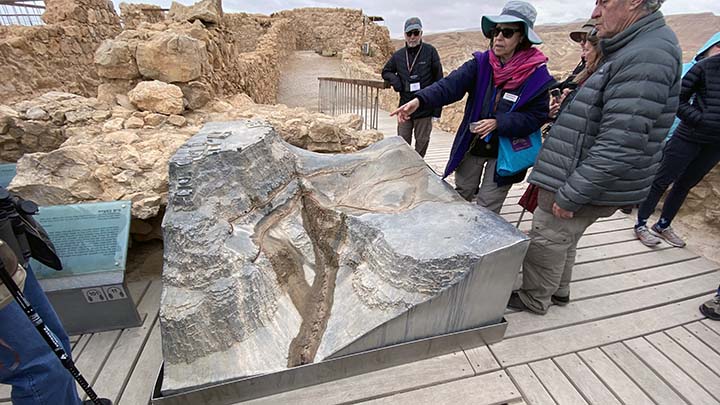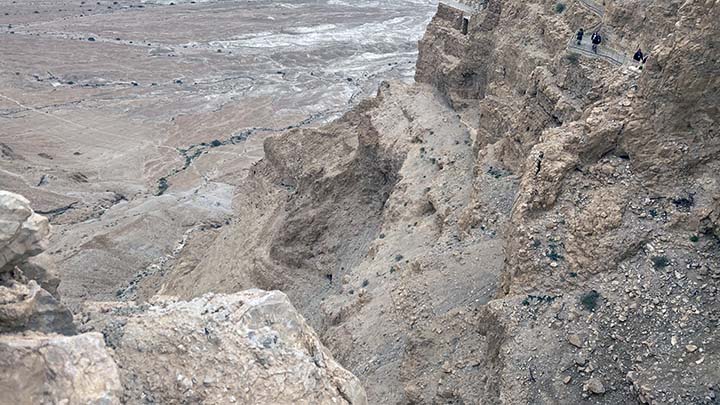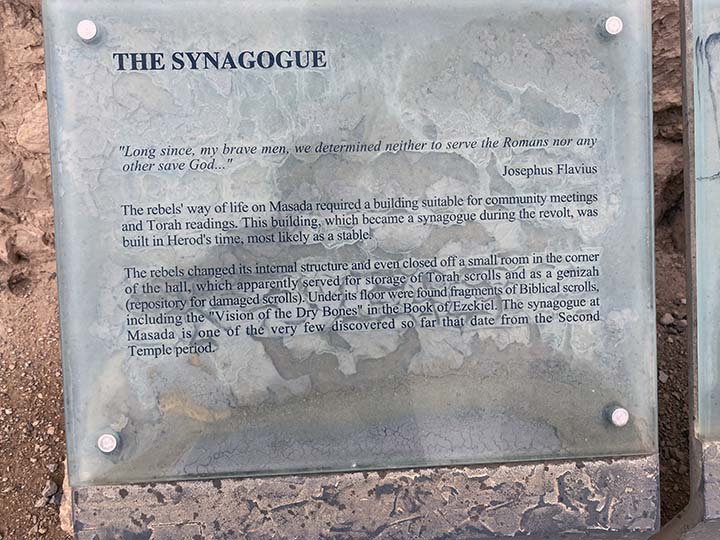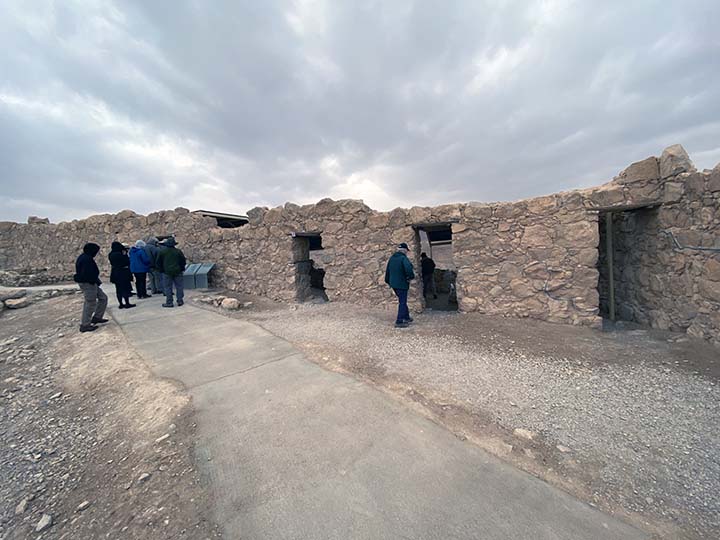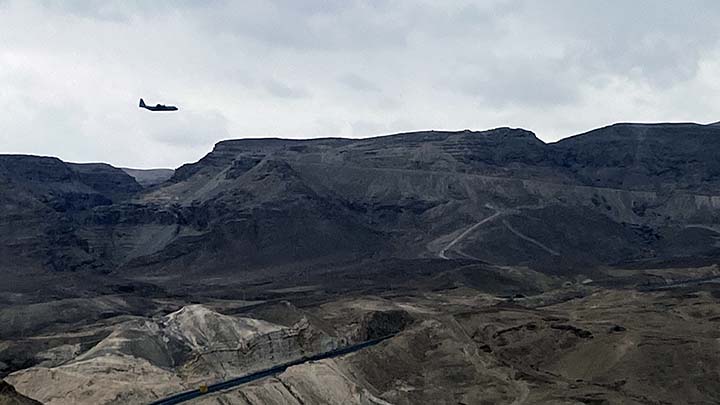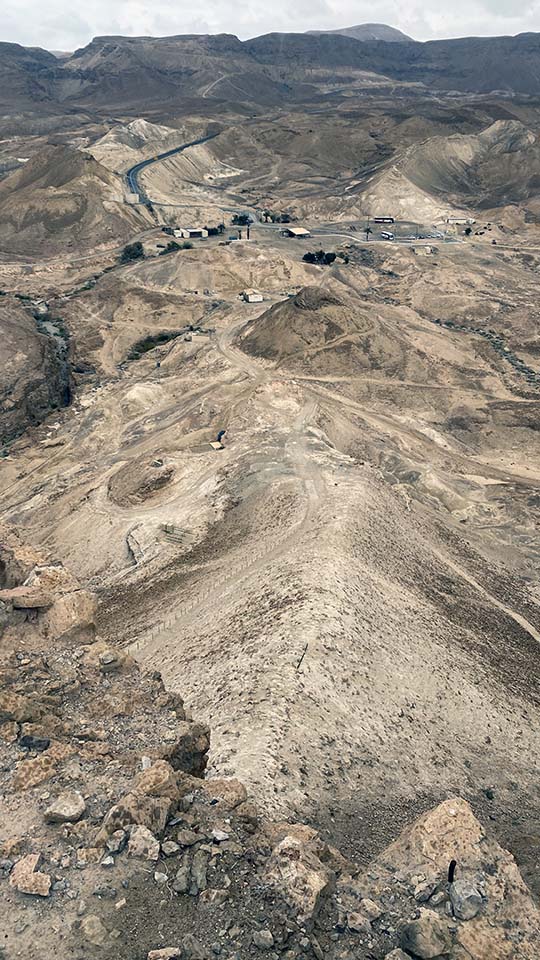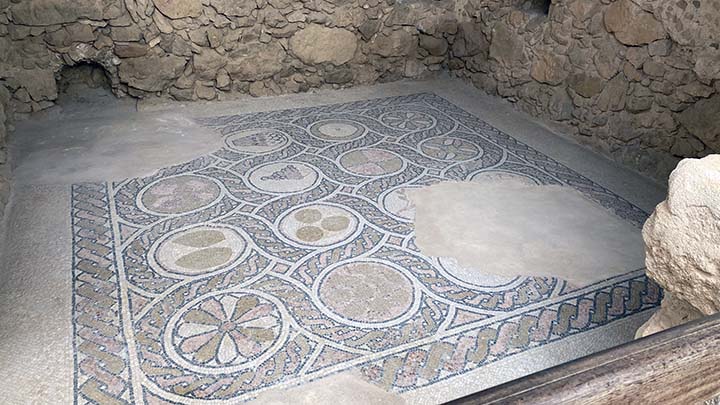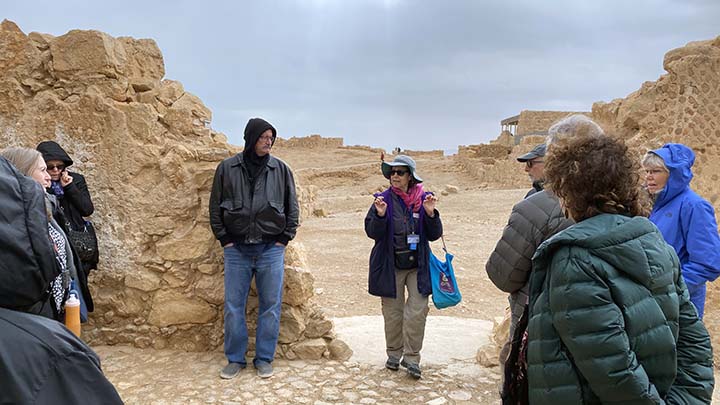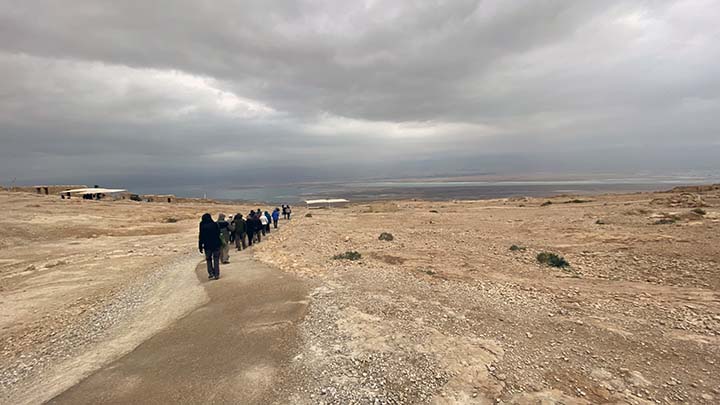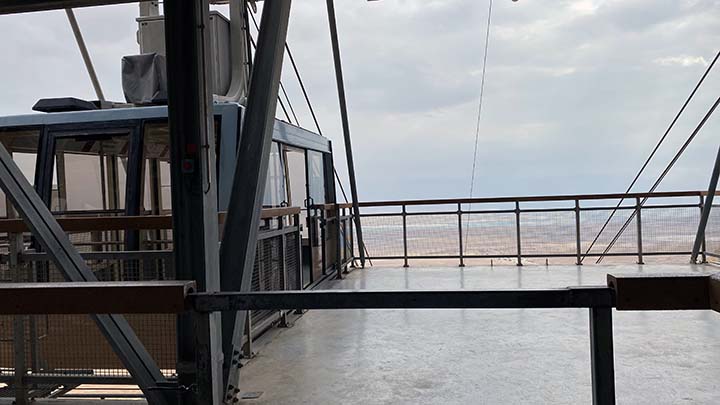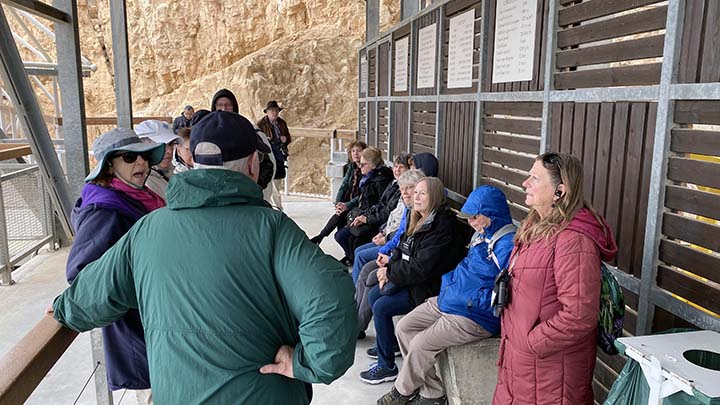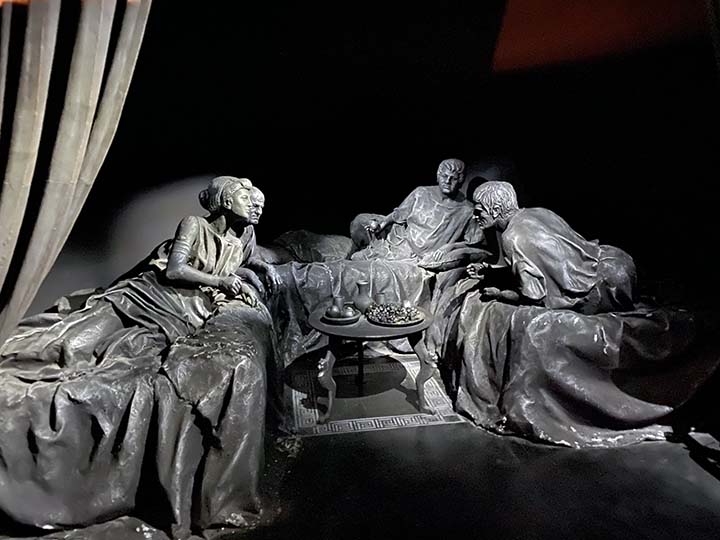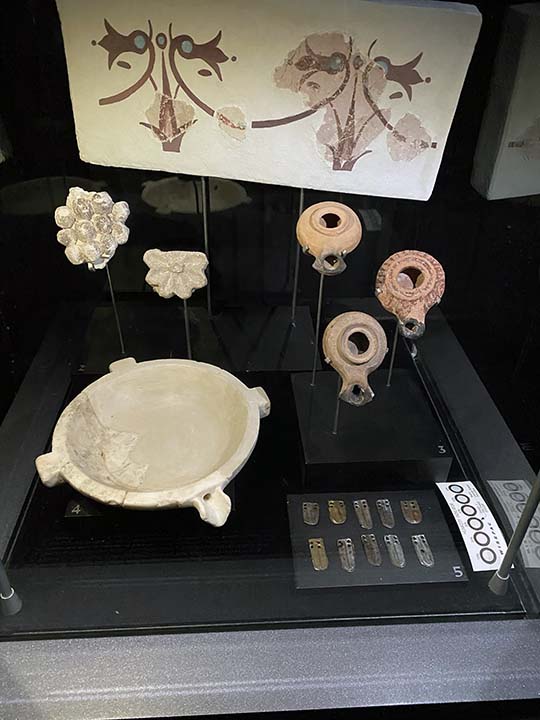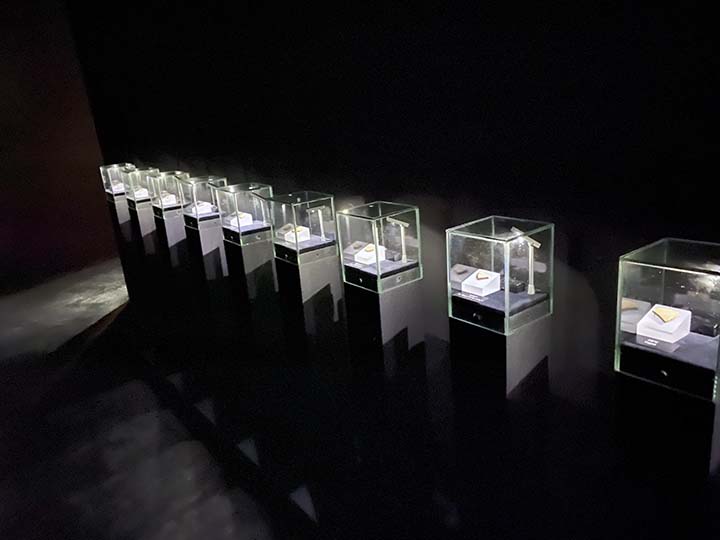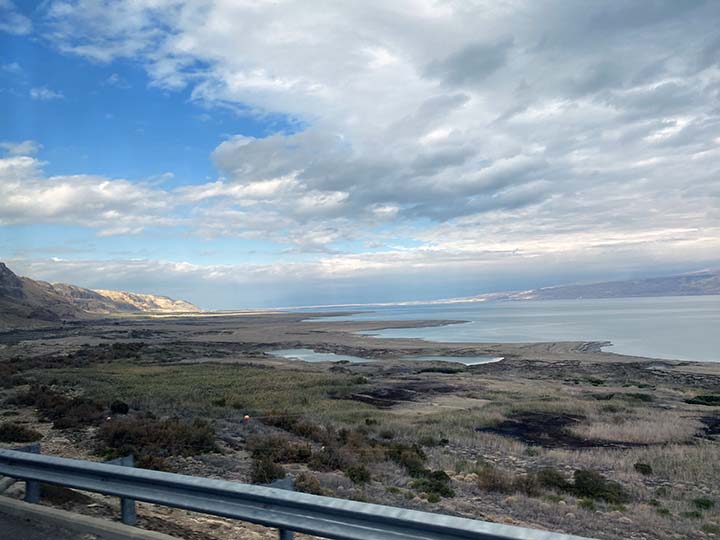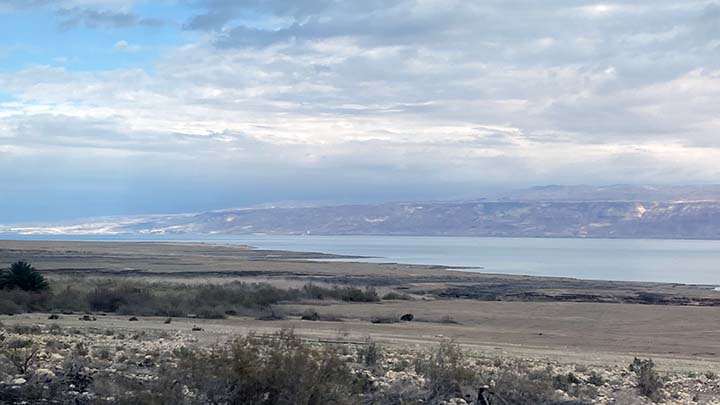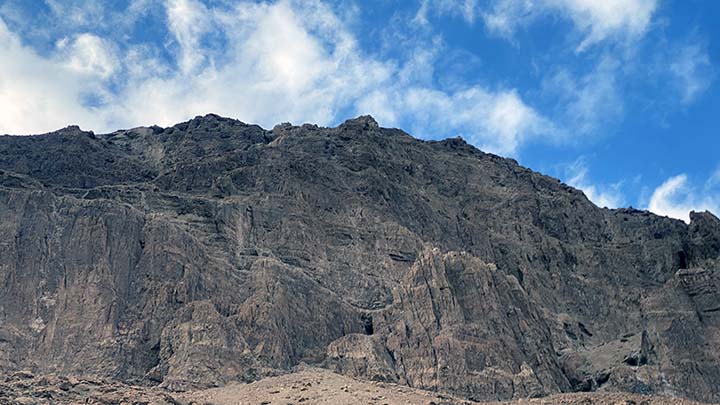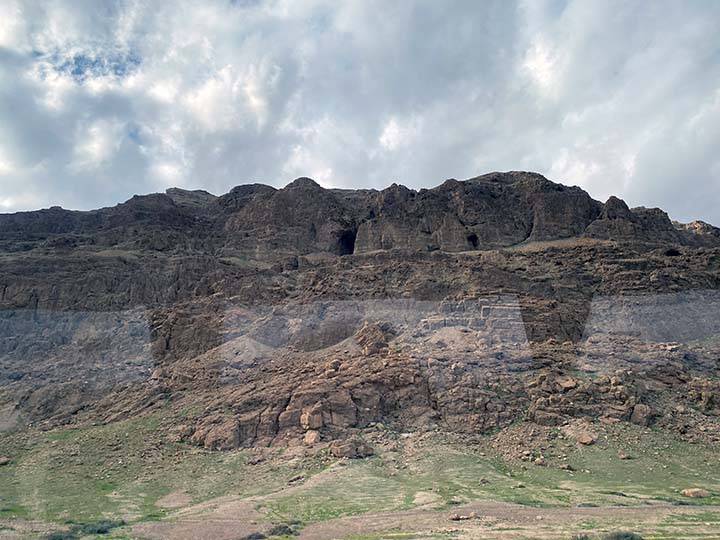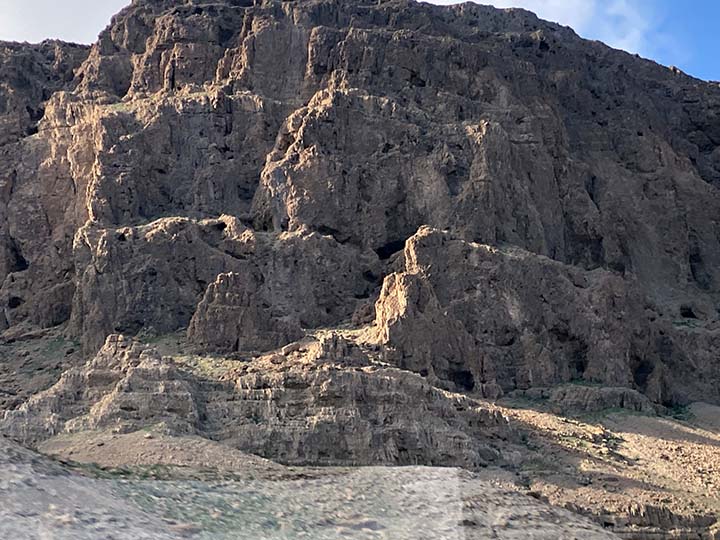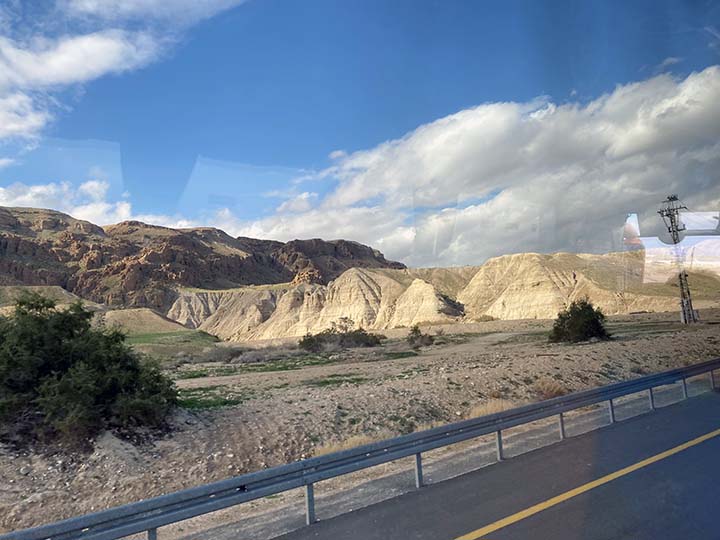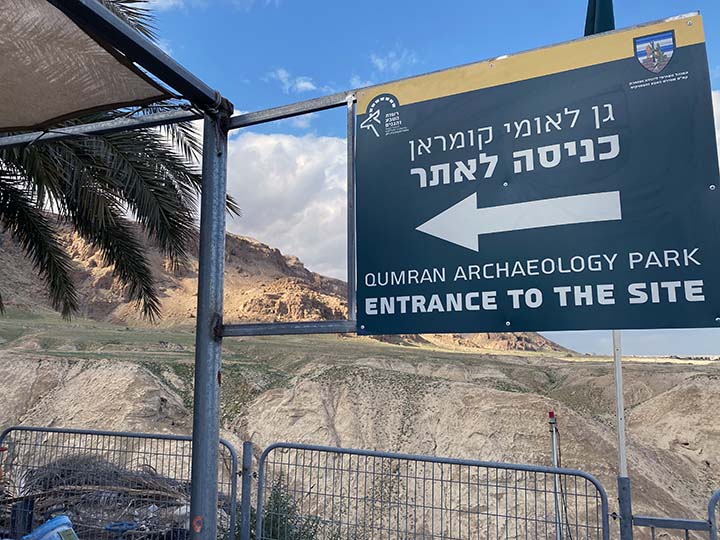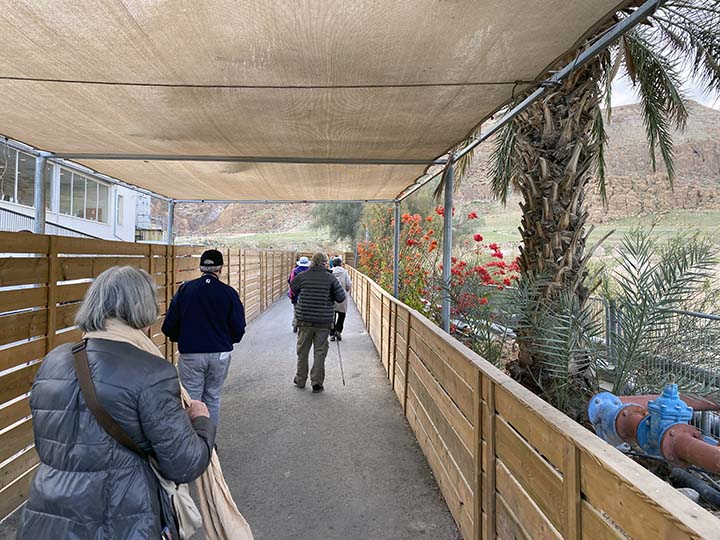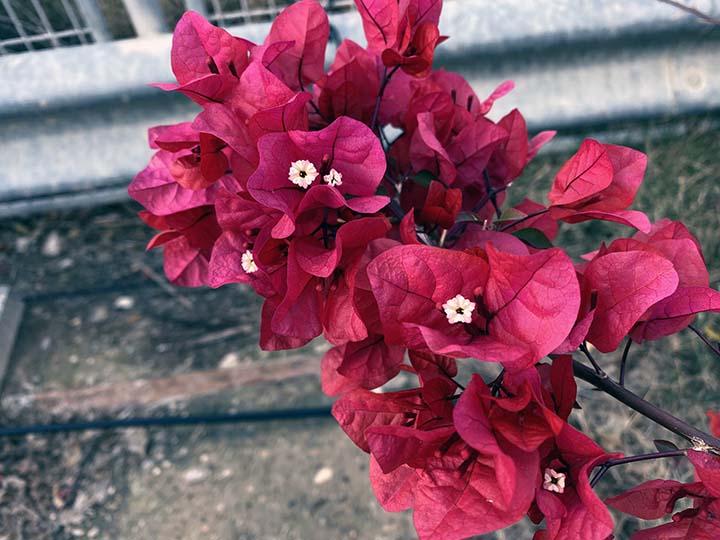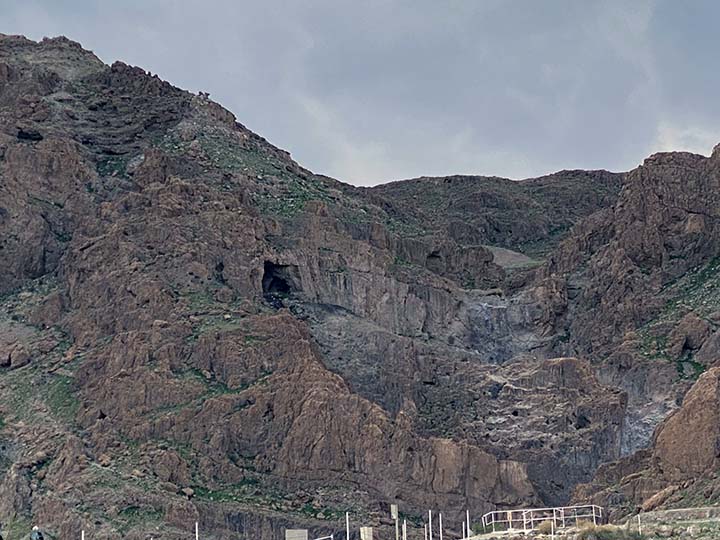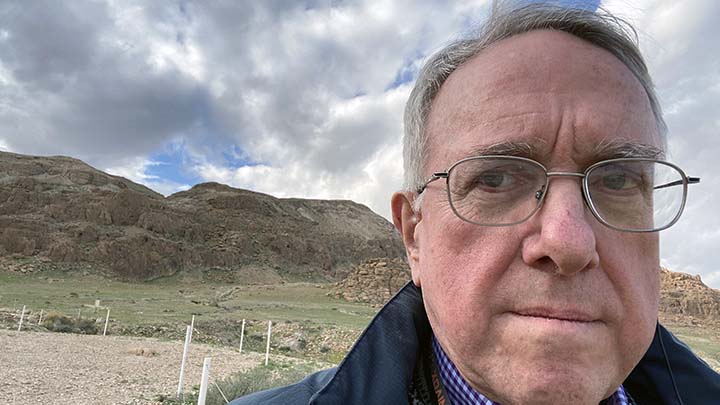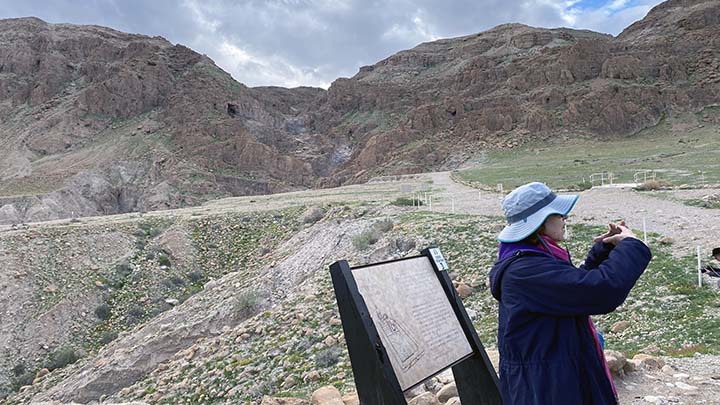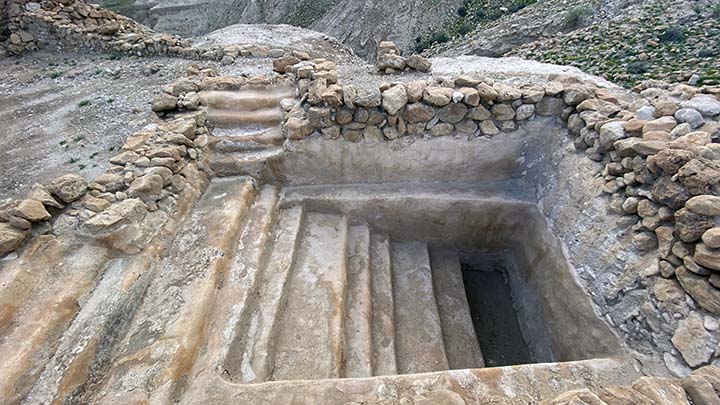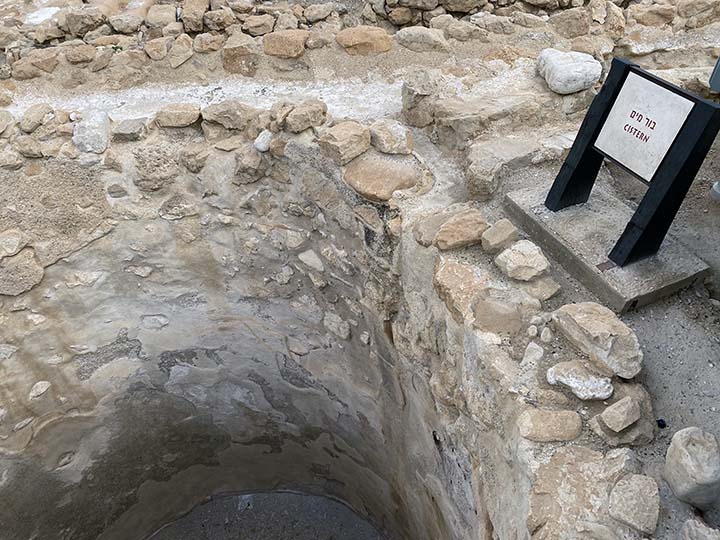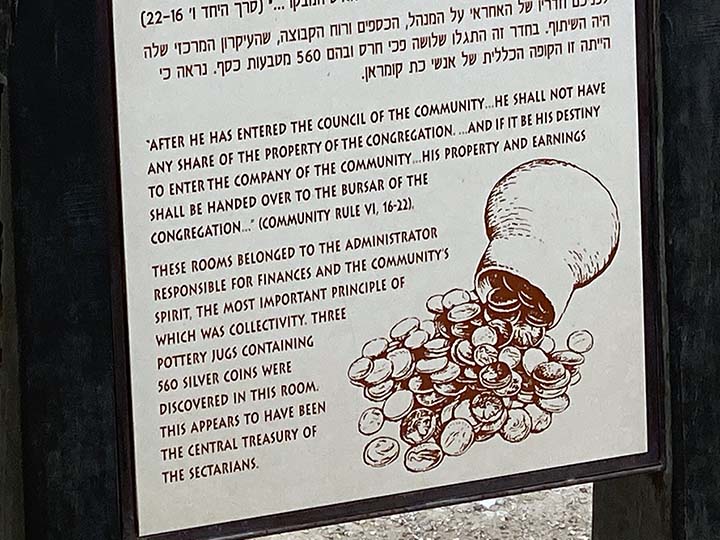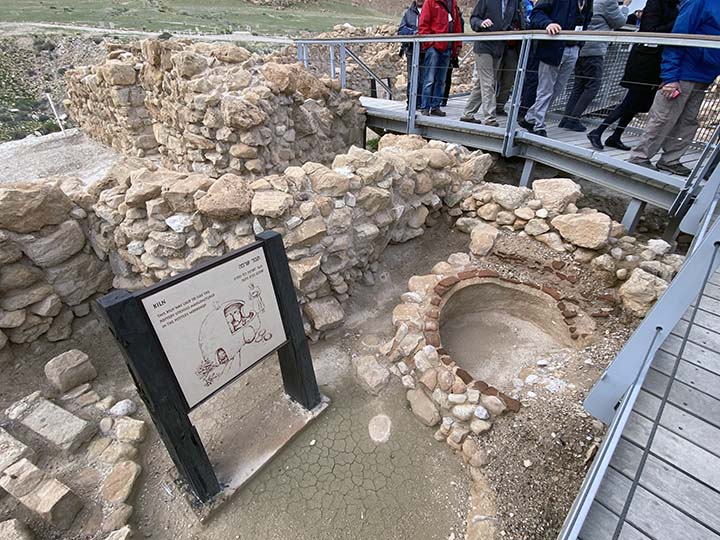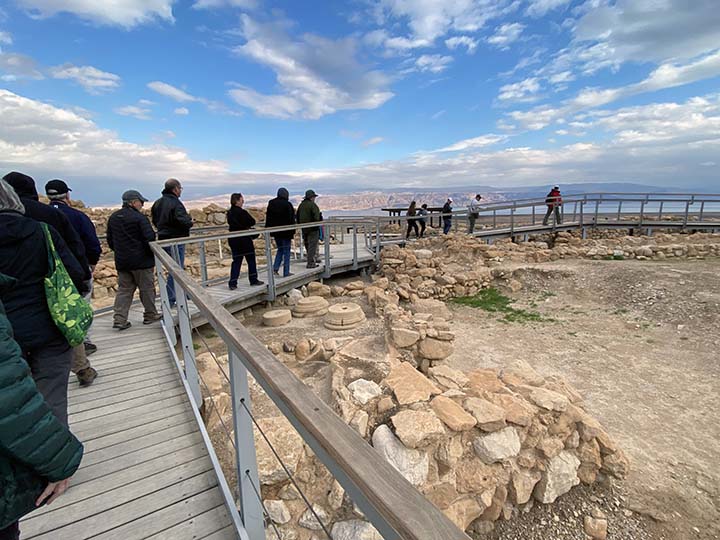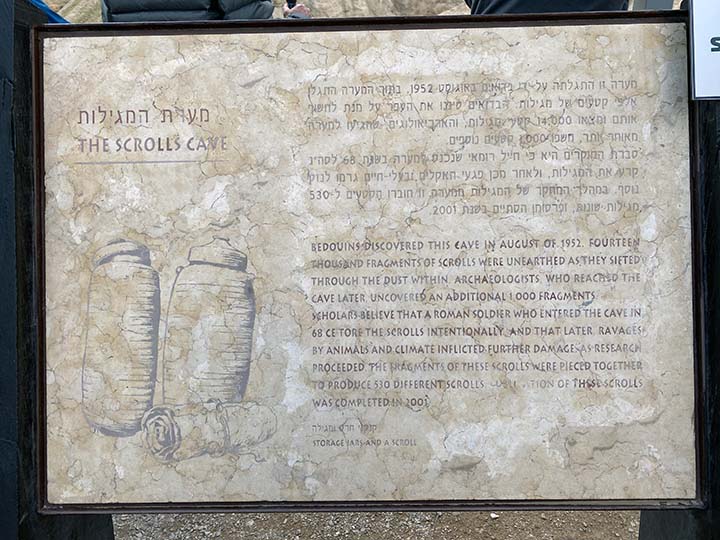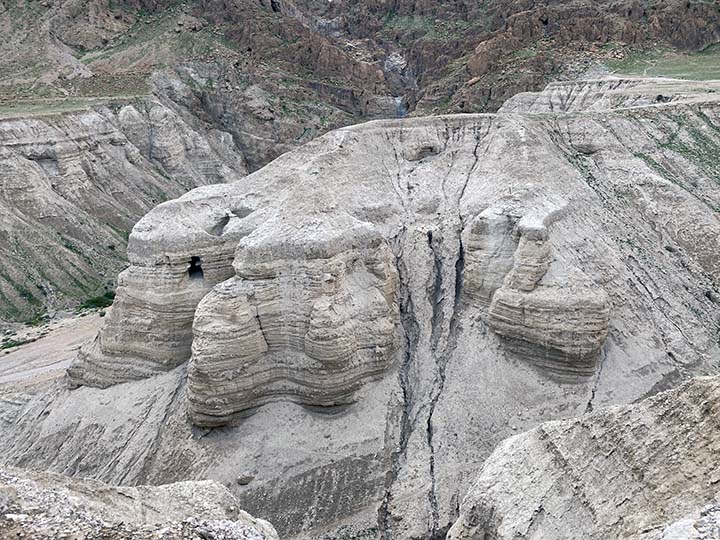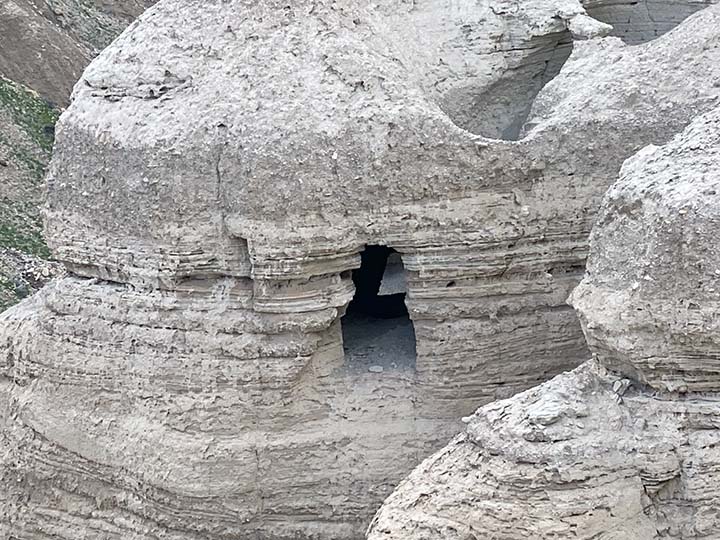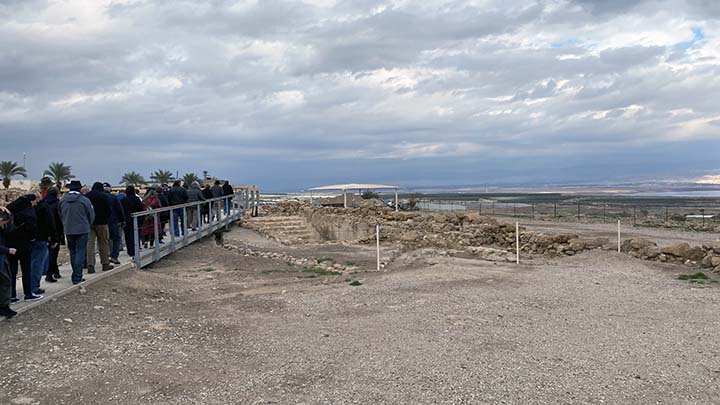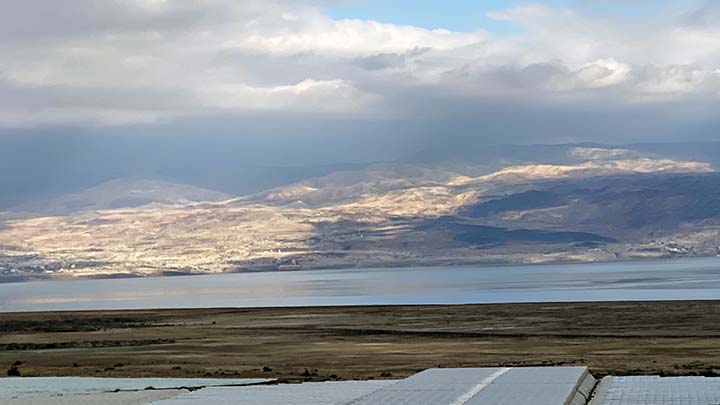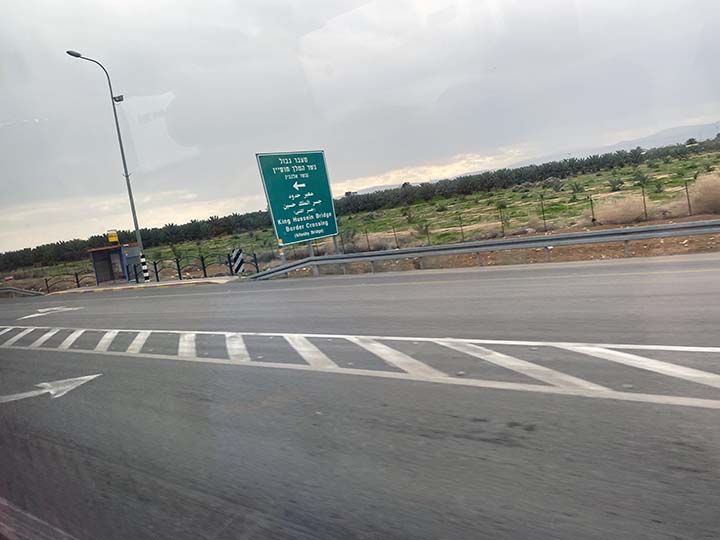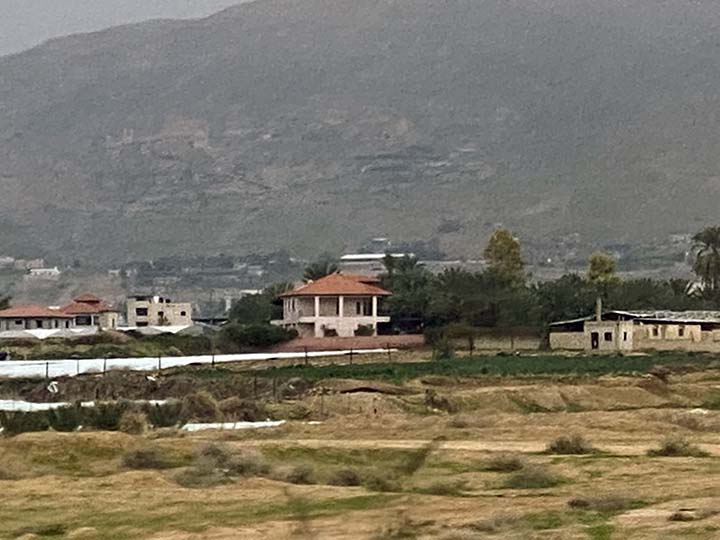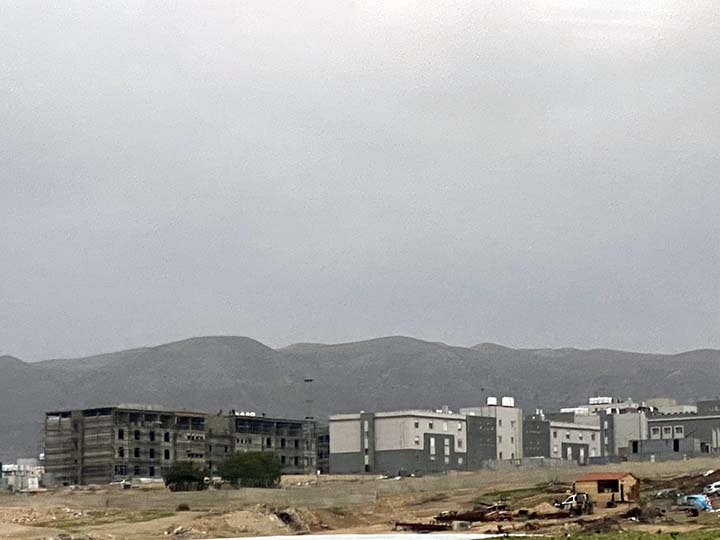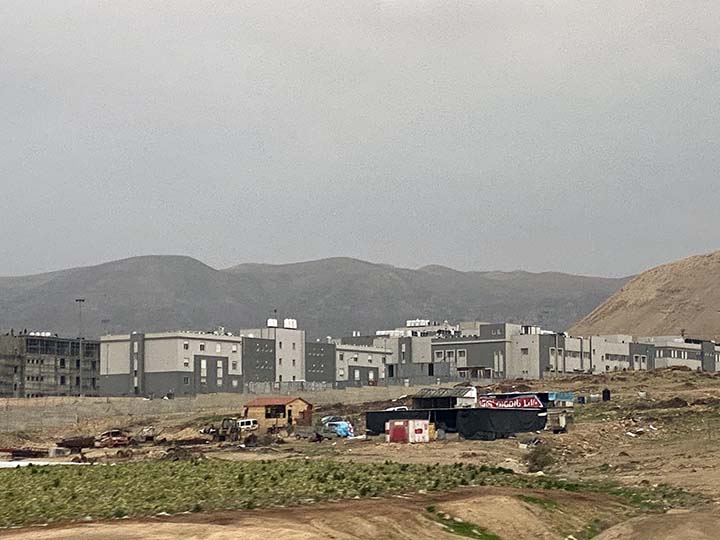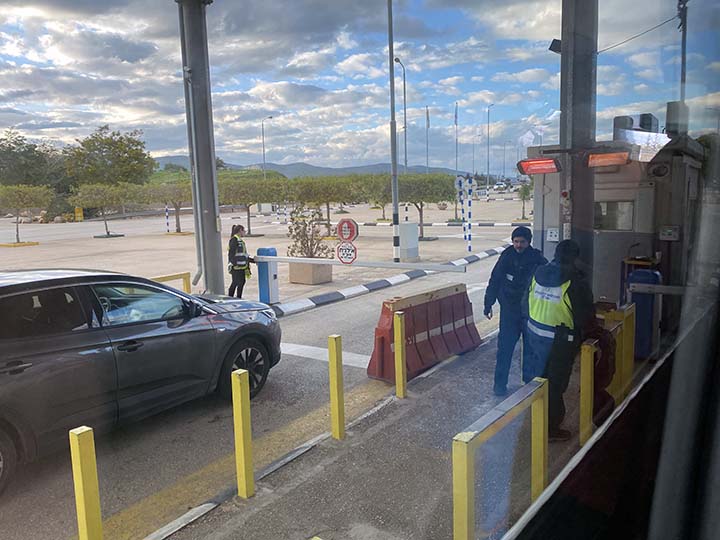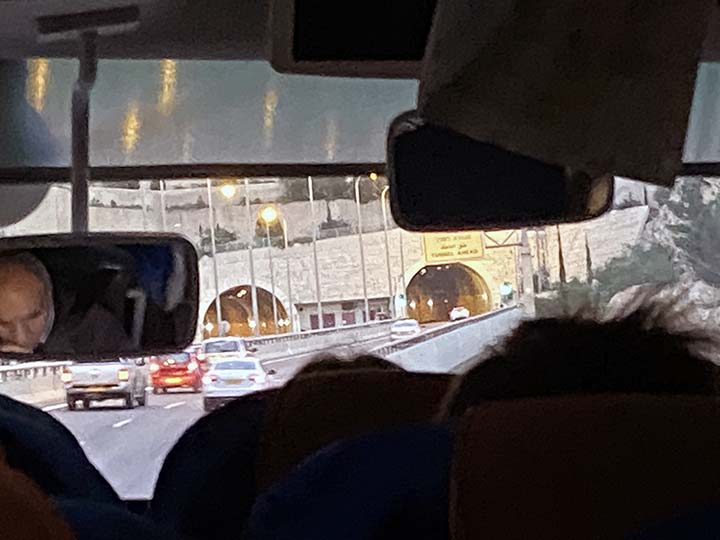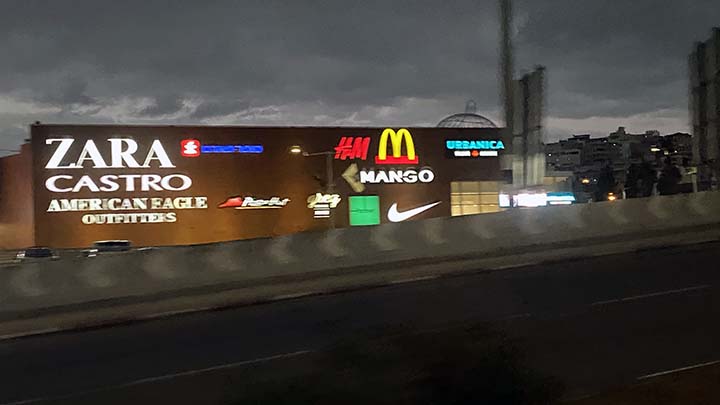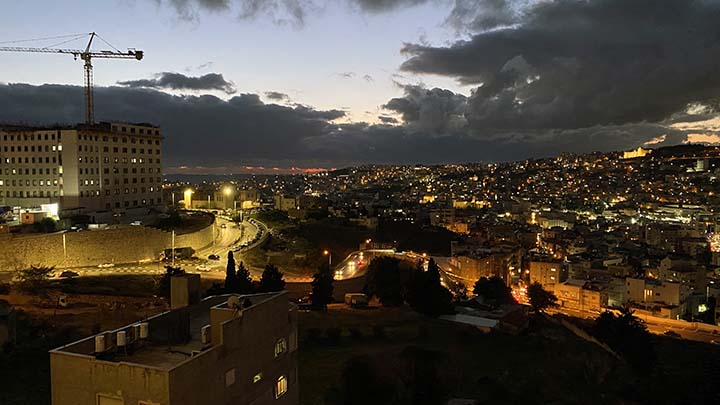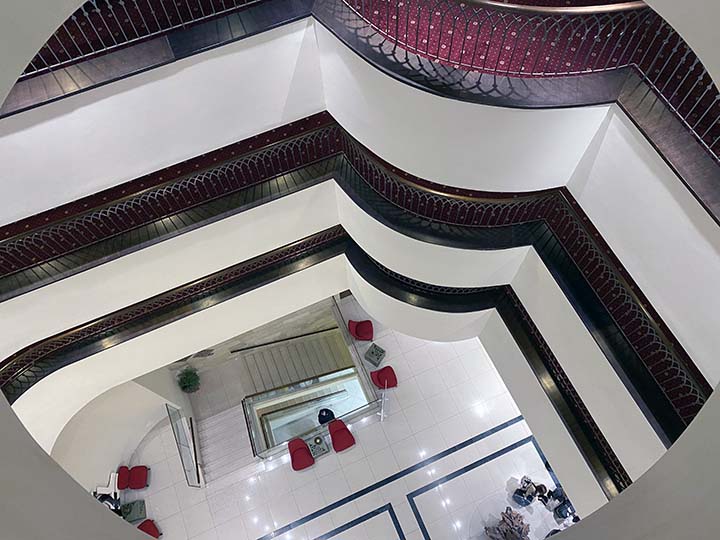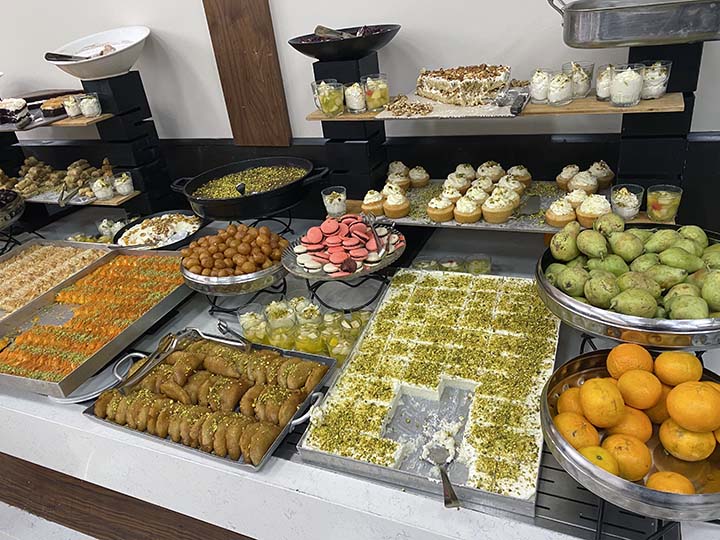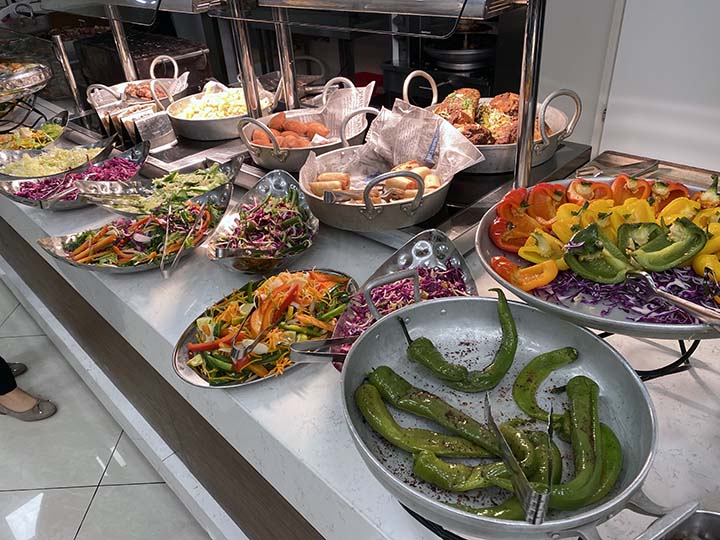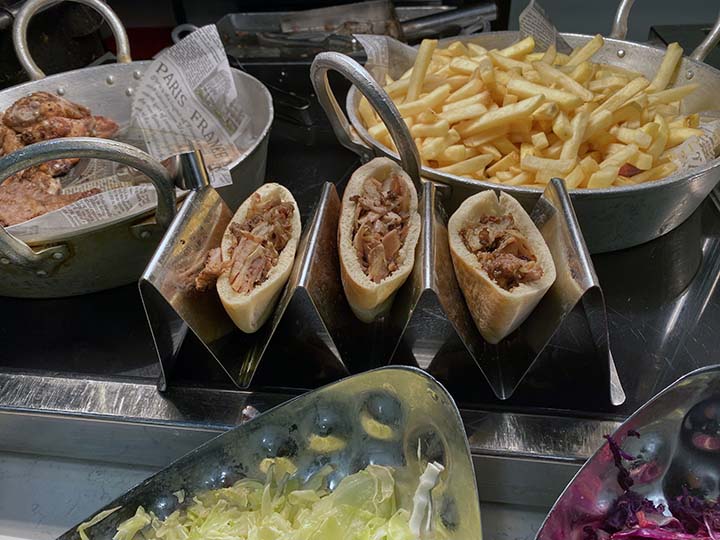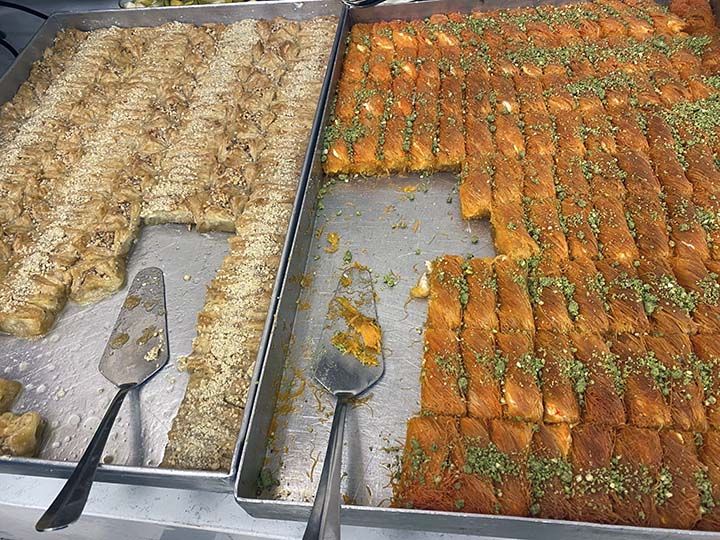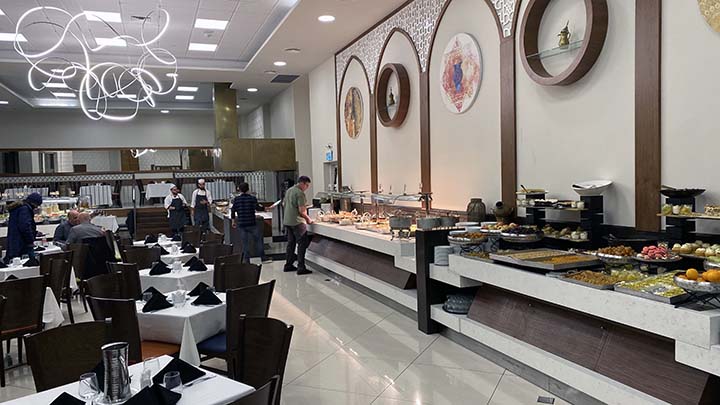|
We are leaving Jerusalem this morning, headed for Jesus’ old home town Nazareth, where we will spend the next two nights. Along the way we’ll take a side trip to Herod’s cliffside getaway and have a look at the caves where a shepherd found the Dead Sea scrolls. And we will eat well.
Everybody has been talking about how good this dish was for breakfast at the hotel every morning, but nobody knew what to call it. Google says it is Shakshouka (Poached Eggs in Spicy Tomato Sauce).
Shari shows us where we're going.
Goodbye Jerusalem.
I've been hearing about this place for a long time.
Glad I finally got to visit.
Shari says this is the road where the traveler met the good Samaritan. I’m sure she’s right, but I never quite pictured it as a four lane divided highway.
Seems it's dry out here even when it's been raining.
Oh look! We must be headed downhill because I think we just went underwater.
Yep, that's the Dead Sea, and as we all know, it sits below sea level. Actually, it's the lowest point on earth, and getting lower every year, as water that would ordinarily fill it by flowing in from the Jordan River has been diverted to quench the thirst of Israel, Jordan, and Palestine. The lake drops over a meter per year. If this goes on long enough, the Sea could face Owens Lake's and the Aral Sea's fate: becoming a wind-swept salt flat. Yet, for now, life goes on.
There are no plants, fish, or any other visible life in the sea. Its salt concentration is a staggering 33.7%, 8.6 times saltier than ocean water, which is only about 3.5% salt. But, biologists have known since the 1930s the lake is "not dead yet." Instead, it's full of microbes that get along quite happily in the salty soup, for it keeps out competitors that would take over in a more hospital aqueous environment. In general, the water contains 1,000 to 10,000 archaea per ml. (Archaea are a huge group of bacteria-like organisms that were only discovered in the 1970s by biologist Carl Woese.) This is a much lower concentration of life than in seawater, but quite respectable, all in all, for a place where one molecule in three is not water. Occasionally, when conditions are right, the sea blooms red with life. This happened in 1980 and 1992.
In a few days we're going to take a dip in it. I'm not kidding..
Just some local industry -- clay pots.
Also, there’s lots of agriculture close by the Dead Sea. Date palms, anyone?
The abundance is impressive.
Especially sitting this close to all that salt water.
The weather is improving, it’s not miserable today; more like gloomy.
Nevertheless, our view of the Dead Sea is impressive.
And if it seems like I'm showing too many pictures of the same thing....this is the DEAD SEA we're looking at! Yes, THAT Dead Sea, and there it is right there off to our left. The tourist got a little carried away with picrures. So sue him.
When you are on the banks of the Dead Sea, you are as low as you can go on planet Earth without getting wet. Now are you impressed?
We had a little excitement when we passed through a checkpoint and a couple of Israeli soldiers bearing Kalashnikov AK-47 Tommy gun assault rifles boarded our bus. Well, that’s what they look like to me. I think one of them had a compass in the stock and this thing that tells time. They just smiled and said hi as they entered the front door of the bus and exited out the back.
Dead or not, it's kinda pretty.
That’s Masada. Herod the Great built two palaces for himself on the mountain and fortified Masada between 37 and 31 BCE.
A World Heritage Site is a landmark or area with legal protection by an international convention administered by the United Nations Educational, Scientific and Cultural Organization (UNESCO). World Heritage Sites are designated by UNESCO for having cultural, historical, scientific or other form of significance. The sites are judged to contain "cultural and natural heritage around the world considered to be of outstanding value to humanity."
Masada holds a prominent place in Jewish history, and this mesa is now an Israeli national park.
The big display in the Visitors Center helps explain what this place is.
Masada is an ancient fortification in the Southern District of Israel situated on top of an isolated rock plateau, akin to a mesa. It is located on the eastern edge of the Judaean Desert, overlooking the Dead Sea. Herod the Great built two palaces for himself on the mountain and fortified Masada between 37 and 31 BCE. According to Josephus, the siege of Masada by Roman troops from 73 to 74 CE, at the end of the First Jewish–Roman War, ended in the mass suicide of the 960 Sicarii rebels who were hiding there. Masada is one of Israel's most popular tourist attractions. The site attracts around 750,000 visitors a year.
Well of course we want to go up there and see the place.
You can walk if you want to… It’ll take about an hour and a half. Or you can just ride the cable car to the top
We rode.
And quite a ride it was.
There was a fine view.
Just remember: if you're afraid of heights, don't look down.
We've made it to the top.
Everybody's accounted for. This is what people who rode look like.
And this is what people who walked look like.
They took the Snake Gate Pass. Back in the day even Josephus thought doing that was a bad idea.
I don't think so.
Shari sets the stage for what we're about to see.
And off we go.
It's a popular place. There are lots of tour groups, lots of languages being spoken, and little pavilions to keep the lectures separate.
Impressive now, but just think what it must have looked like back in the day.
The tourist takes it all in.
Even if it seems a bit worse for wear.
Still, you can't argue with old Herod's sense of where to put a palace. Very nice view.
Herod's view
Even the pigeons and starlings are impressed.
A bird's eye view
Yep, very nice.
The tourist is loving it.
Shari is using a scale model to explain the palace layout. This was quite a place. Old Herod really knew how to build a palace.
Shari has all the facts.
There’s not a lot left of Herod's palace, though in some places frescoes still remain in place on the walls.
I could've lived in a place like this, I think.
It's pretty. Use your imagination.
Daan made some friends. They are starlings.
Nice back then, but pretty desolate now.
Shari has spotted something. Have I mentioned that she was a terrific guide?
The Dead Sea probably was a little closer in Herod's day.
It's a long way down.
It's not exactly easy to visualize how Herod's palace looked in his day.
But it can be done. That’s what’s left of one of Herod’s party rooms.
See it down there on the model? It's the full circle room, not the half circle.
The Chiefs had just won the Super Bowl. You know that must be a big deal when you run across evidence in this remote spot.
The Road Scholars are taking a rest.
But there's still more to see.
That’s a cistern. Water was scarce up here on the mountain, and they captured all they could every time there were flash floods coming down from the mountains. Everybody insisted that it never rains here at Masada. But it rained on us today.
I think I can see the old water level.
I mean, how DID they get water up here?
Shari used this model to demonstrate how the water was captured when it rushed down the mountain side. There are little caves along those cliffside aqueducts, and they would fill up with water. Then slaves would spend the next few weeks hauling water from the little caves up to the cisterns.
How the water flowed.
Can you see the aqueducts and the caves down there?
Of course there was a synagogue up here.
And barracks for soldiers.
The Israeli Air Force paid us a short but loud visit.
Masada was impregnable, except when the Roman army pregged it. See that ramp down there? That was built by the Roman army and it’s how they eventually breached the wall of Masada. What had happened was a group of Jewish Sicarii zealots had taken refuge up on Masada in the year 73 and from their position they were resisting the Romans, who were mad because the Sicarii had massacred a Roman garrison. (The Sicarii were a splinter group of the Jewish Zealots who, in the decades preceding Jerusalem's destruction in 70 CE, strongly opposed the Roman occupation of Judea and attempted to expel them and their sympathizers from the area. The Sicarii carried sicae, or small daggers, concealed in their cloaks. At public gatherings, they pulled out these daggers to attack Romans and Roman sympathizers alike, blending into the crowd after the deed to escape detection.} According to Josephus, when Roman troops entered the fortress, they discovered that its defendants had set all the buildings but the food storerooms ablaze and committed mass suicide or killed each other, 960 men, women, and children in total. It’s an interesting story and you can read about it here: https://en.m.wikipedia.org/wiki/Masada
There used to be a church up here. That’s part of the mosaic floor.
Shari explains it all.
But now it's time to head back down the mountain.
We'll ride this time too.
It's been a fascinating experience.
The specs.
Heading down.
There’s a very nice, pretty elaborate museum attached to the Masada complex at the bottom of the hill. There are bronze exhibits like this throughout, explaining what life was like here.
Archaeologists have found some very nice artifacts.
And lovely decorations.
Of all I saw, what impressed me most among the artifacts of Masada were these little shards of pottery with names inscribed.
Did you follow the link above to the story of the mass suicide? For a pretty good reason the archaeologists believe these are the actual lots that were drawn to determine who would be the last of the Sicarii to live after killing all the other men women and children. Then these men would kill each other and the final one would fall on his sword. Like I've said, this has been an interesting place to visit.
Both desolate and beautiful.
Now we have left Masada and we are driving along the highway on the west side of the Dead Sea.
Yes, I know I've already shown pictures of the Dead Sea.
What are all those holes up there in the side of the cliff?
They're all over.
See them?
Well, look closer.
We are about to arrive at the famous Wadi Qumran where the Dead Sea scrolls were discovered.
Just FYI, a “wadi” is a dry gulch. We are visiting an archaeological site at Wadi Qumran, location of a small settlement where a group of Jewish ascetics called Essenes once lived.
So let's have a look.
Do not get distracted by the pretty flowers.
We've come to see caves.
The tourist is more excited than he looks. He's wanted to see this place all his life.
And Shari is going to show it to him. She's describing the sect that built this place.
Experts are pretty sure they were Essenes because there are so many ritual baths. The motto of the Essenes was, “cleanliness is next to godliness,” or something like that.
The Jewish historian Josephus records that Essenes existed in large numbers, and thousands lived throughout Roman Judaea, but they were fewer in number than the Pharisees and the Sadducees, the other two major sects at the time. The Essenes lived in various cities but congregated in communal life dedicated to voluntary poverty, daily immersion, and asceticism (their priestly class practiced celibacy). The Essenes have gained fame in modern times as a result of the discovery of an extensive group of religious documents known as the Dead Sea Scrolls, which are commonly believed to be the Essenes' library. These documents preserve multiple copies of parts of the Hebrew Bible untouched from possibly as early as 300 BCE until their discovery in 1946. Most scholars dispute the notion that the Essenes wrote the Dead Sea Scrolls.
This cistern held the sect's water supply, a valuable commodity in this region.
There was a treasury.
And a kiln.
And over thiis way....
The Essenes were a literate sect of Jews, and they had acquired a very large library of texts. Nobody knows for sure just why, but somewhere along the line they stored their texts in ceramic jars and hid them in the caves which pockmark the walls of Wadi Kumran.
The tourist is glad they did. See that hole in the rock behind him?
That is the fourth cave that was found to contain the Dead Sea Scrolls. Researchers have assembled a collection of 981 different manuscripts – discovered in 1946/47 and in 1956 – from 11 caves. https://en.m.wikipedia.org/wiki/Dead_Sea_Scrolls
You can see right through to the other side.
See?
Well I guess that's enough time spent on old scrolls. We're off to Nazareth.
But not without saying goodbye to the lovely but dead Dead Sea.
And what looks like a dead camel. Maybe just a tired camel.
Another border crossing.
As we began heading north again, we passed Jericho.
Those walls look fine to me.
Quite fit, actually.
We had a little excitement when we passed through yet another checkpoint and a couple of Israeli soldiers bearing Kalashnikov AK-47 Tommy gun assault mortar flame throwing rifles boarded our bus. Well, that’s what they look like to me. I think one of them had a compass in the stock and this thing that tells time. They just smiled and said hi as they entered the front door of the bus and exited out the back. I guess they've come to realize Road Scholars aren't much of a threat to the local peace.
That is mount Gilboa where Saul died.
We have to pass through a tunnel on our way to Nazareth.
And now we are entering Nazareth itself. It has become pretty modern around here. I’ll bet that when Jesus comes back he won’t hardly recognize the place.
Here’s the view of Nazareth from my Ramada Inn window.
And here is the view from the hallway outside my door down to the lobby. This is a nice place. It was funny on the bus when our guide, Shari, revealed that she would be staying at a different hotel tonight because there was no room for her here. And you thought such things happened only in Bethlehem.
There was a massive amount of great food available in the buffet.
I’m going to put on 20 pounds before this trip is over.
Yum.
Just yum.
Kanafeh is a traditional Middle Eastern dessert made with shredded filo pastry, or alternatively fine semolina dough, soaked in sweet, sugar-based syrup, and typically layered with cheese, or with other ingredients such as clotted cream or nuts, depending on the region. It is popular in the Arab world, particularly the Levant and Egypt, and especially among Palestinians. One of the most well-known preparations of kanafeh is knafeh nabulsiyeh, which originated in the Palestinian city of Nablus, and is the most representative and iconic Palestinian dessert. Knafeh nabilsiyeh uses a white-brine cheese called Nabulsi. The pastry is colored with orange food coloring, and sometimes topped with crushed pistachio nuts. And it is SO good.
I'll gain 20 pounds before I get home, I just know it.
|

